State-of-the-Art Navigation Systems and Sensors for Unmanned Underwater Vehicles (UUVs)
Abstract
:1. Introduction
2. Concept of Underwater Vehicles
2.1. History of Underwater Vehicle Development
- (1)
- A system that requires no human intervention when carrying out any of its designed activities is considered fully autonomous.
- (2)
- Mixed initiative refers to an independent framework that permits either the system or a person to respond to data that has been sensed. The system may organize its behavior, both overtly and covertly, with human behavior.
- (3)
- A human-controlled system is capable of carrying out an extensive range of tasks once top-level approval or guidance from a human being is received.
- (4)
- Human-delegated systems are capable of executing restricted control tasks on an assigned foundation.
- (5)
- Human-assisted systems are able to carry out tasks simultaneously with human input. Nevertheless, the system cannot function without supporting human support.
- (6)
- A system that lacks autonomy is referred to as human-operated.
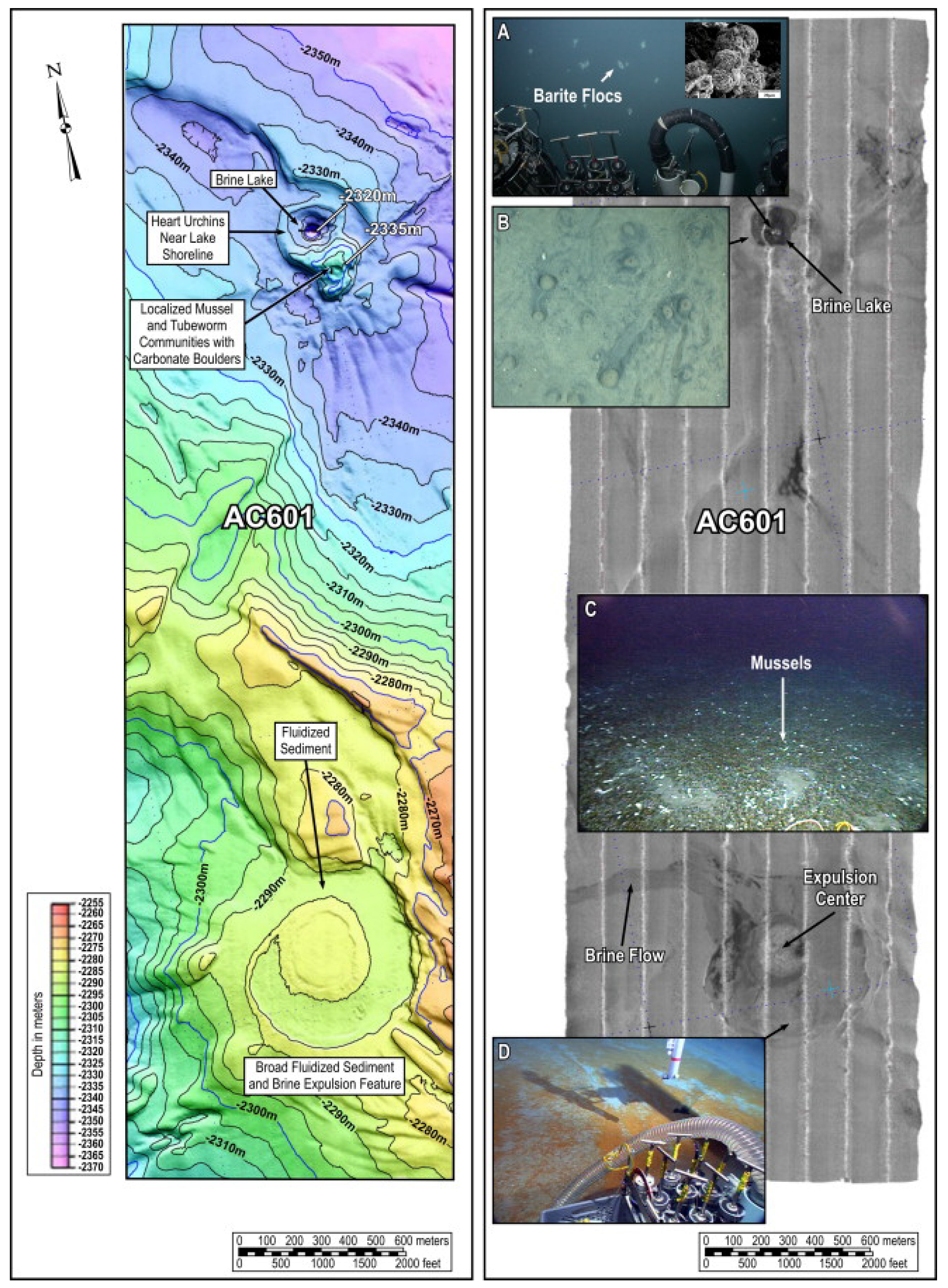
2.2. Current Navigation Technologies
2.2.1. Inertial Navigation System
2.2.2. Acoustic Navigation System
2.2.3. Geophysical Navigation System
- KFs, or Kalman Filters;
- Particle screens;
- Algorithms for contemporaneous mapping and positioning and simultaneous mapping along with localization (SLAM).
2.3. Present Challenges
2.3.1. A Framework for Using Sonar Navigation with Existing Systems
2.3.2. Navigationally Optimal Routes
2.3.3. Relative Placement and Reactive Control Using Local Characteristics
2.3.4. Navigating with Little Sonar Use
2.3.5. Navigating with Significant Features
3. Navigation Systems Application in Underwater Vehicles
4. Underwater Navigation Sensors
4.1. Inertial Measurement Unit (IMU)
4.2. Doppler Velocity Log (DVL)
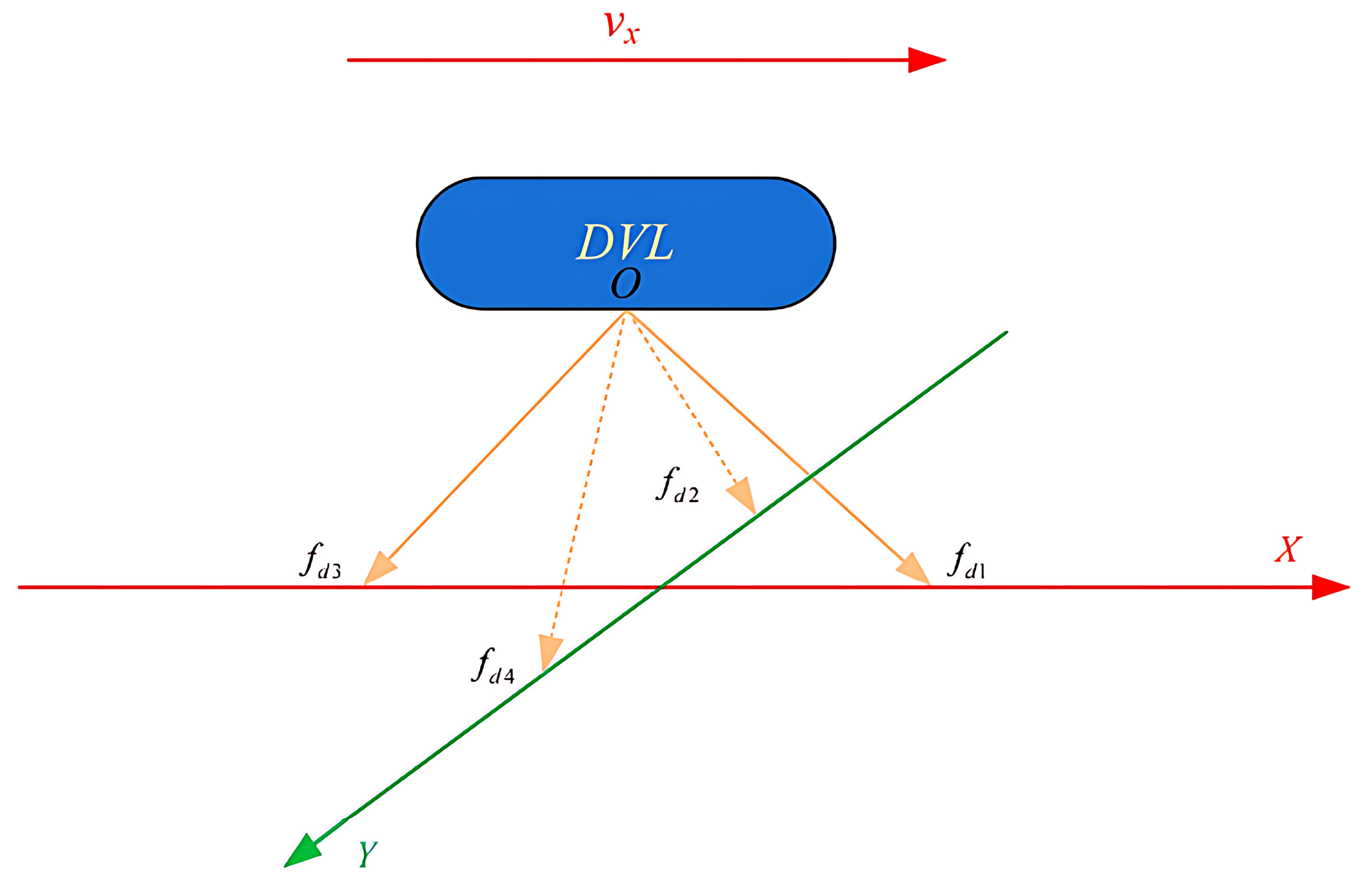
4.3. Ultra-Short Baseline (USBL)
4.4. Equipment Configuration and Frame Specifications
5. Types of Velocity Sensors for UUVs
5.1. Ultrasonic Speed Sensor
5.2. Paddlewheel Speed Sensor
5.3. Doppler Velocity Log (DVL) Sensor
5.4. Optical Velocity Sensor
5.5. Electromagnetic Velocity Sensor
5.6. A Summary of the Velocity Sensors Specifications
5.7. Comparing the Requirements of Commercial Products and Military Contexts of the Sensors
5.8. Low-Cost Non-Commercial Velocity Sensors
5.9. Limitations and Future Prospects of Sensors
6. Present Status of Advanced UUV Development and Application Abroad
6.1. Advanced Navigation-Based UUV in the USA
6.2. Advanced Navigation-Based UUV in European Countries
6.3. Advanced Navigation-Based UUV in Russia
7. Future Prospects of Navigation Systems and Sensors of UUV
7.1. Sonars’ Suitability for Geophysical Navigation
7.2. Underwater Map Resolution Requirements
7.3. Identifying and Categorizing Naturally Existing Underwater Features
7.4. Using Contour Alignment in Navigation
8. Conclusions
Author Contributions
Funding
Institutional Review Board Statement
Informed Consent Statement
Data Availability Statement
Conflicts of Interest
Abbreviations
| ADCP | Acoustic Doppler Current Profilers |
| AHRS | Altitude Heading Reference Systems |
| ASKF | Augmented State Kalman Filter |
| AUV | Autonomous Underwater Vehicle |
| BL | Bottom Lock |
| CTS | Constant Time SLAM |
| CML | Concurrent Mapping and Localization |
| DOE | Diffractive Optical Element |
| DVL | Doppler Velocity Logger |
| DVS | Doppler Velocity Sensor |
| DR | Dead Rocking |
| EKF | Extended Kalman Filter |
| EMC | Electromagnetic Compatibility |
| FPGA | Field Programmable Gate Array |
| GNSS | Global Navigation Satellite System |
| GRUs | Gated Recurrent Units |
| IMU | Inertial Measurement Unit |
| INS | Inertial Navigation System |
| IoUT | Internet of Underwater Things |
| KF | Kalman Filter |
| LBL | Long Baseline |
| MAK | Mapping Augmented Kalman |
| MBESs | Multibeam Echo Sounders |
| MCP | Maritime Connectivity Platform |
| MEMS | Micro-electro Mechanical Systems |
| NS | Navigating System |
| ONR | Office of Naval Research |
| PEMFC | Proton Exchange Membrane Fuel Cell |
| ROV | Remotely Operated Vehicle |
| SBPs | Subbottom Profilers |
| SIS | Sequential Importance Sampling |
| SLAM | Simultaneous Localization And Mapping |
| SSSs | Sidescan Sonars |
| TAN | Terrain-aided Navigation |
| UKF | Unscented Kalman Filter |
| USBL | Ultrashort Baseline |
| UUV | Unmanned Underwater Vehicle |
| v-SLAM | Visual Simultaneous Localization And Mapping |
| WL | Water Lock |
References
- Huang, H.M. Autonomy levels for unmanned systems (ALFUS) framework: Safety and application issues. In Proceedings of the 2007 Workshop on Performance Metrics for Intelligent Systems, Washington, DC, USA, 28–30 August 2007; pp. 48–53. [Google Scholar]
- Balestrieri, E.; Daponte, P.; De Vito, L.; Lamonaca, F. Sensors and Measurements for Unmanned Systems: An Overview. Sensors 2021, 21, 1518. [Google Scholar] [CrossRef] [PubMed]
- Wang, X. Active fault tolerant control for unmanned underwater vehicle with sensor faults. IEEE Trans. Instrum. Meas. 2020, 69, 9485–9495. [Google Scholar] [CrossRef]
- Lin, C.; Wang, H.; Fu, M.; Yuan, J.; Gu, J. A gated recurrent unit-based particle filter for unmanned underwater vehicle state estimation. IEEE Trans. Instrum. Meas. 2020, 70, 1000612. [Google Scholar] [CrossRef]
- Martin, B.; Tarraf, D.C.; Whitmore, T.C.; DeWeese, J.; Kenney, C.; Schmid, J.; DeLuca, P. Advancing Autonomous Systems; Rand Corporation: Santa Monica, CA, USA, 2019; pp. 9–11. [Google Scholar]
- Sánchez, P.J.B.; Papaelias, M.; Márquez, F.P.G. Autonomous underwater vehicles: Instrumentation and measurements. IEEE Instrum. Meas. Mag. 2020, 23, 105–114. [Google Scholar] [CrossRef]
- Petillot, Y.R.; Antonelli, G.; Casalino, G.; Ferreira, F. Underwater robots: From remotely operated vehicles to intervention-autonomous underwater vehicles. IEEE Robot. Autom. Mag. 2019, 26, 94–101. [Google Scholar] [CrossRef]
- Paull, L.; Saeedi, S.; Seto, M.; Li, H. AUV Navigation and Localization: A Review. IEEE J. Ocean. Eng. 2014, 39, 131–149. [Google Scholar] [CrossRef]
- Hagen, P.E.; Midtgaard, O.; Hasvold, O. Making AUVs Truly Autonomous. In Proceedings of the OCEANS 2007, Vancouver, BC, Canada, 29 September–4 October 2007; pp. 1–4. [Google Scholar] [CrossRef]
- Du, X.; Hu, X.; Hu, J.; Sun, Z. An adaptive interactive multi-model navigation method based on UUV. Ocean Eng. 2023, 267, 113217. [Google Scholar] [CrossRef]
- Subad, R.A.S.I.; Cross, L.B.; Park, K. Soft robotic hands and tactile sensors for underwater robotics. Appl. Mech. 2021, 2, 356–382. [Google Scholar] [CrossRef]
- Qin, J.; Li, M.; Li, D.; Zhong, J.; Yang, K. A survey on visual navigation and positioning for autonomous UUVs. Remote Sens. 2022, 14, 3794. [Google Scholar] [CrossRef]
- Melo, J.; Matos, A. Survey on advances on terrain based navigation for autonomous underwater vehicles. Ocean Eng. 2017, 139, 250–264. [Google Scholar] [CrossRef]
- McNelly, B.P.; Whitcomb, L.L.; Brusseau, J.P.; Carr, S.S. Evaluating Integration of Autonomous Underwater Vehicles into Port Protection. In Proceedings of the OCEANS 2022, Hampton Roads, VA, USA, 17–20 October 2022; pp. 1–8. [Google Scholar] [CrossRef]
- Stutters, L.; Liu, H.; Tiltman, C.; Brown, D.J. Navigation Technologies for Autonomous Underwater Vehicles. IEEE Trans. Syst. Man Cybern. Part C (Appl. Rev.) 2008, 38, 581–589. [Google Scholar] [CrossRef]
- Bjerkeng, M.; Kirkhus, T.; Caharija, W.; T. Thielemann, J.; B. Amundsen, H.; Johan Ohrem, S.; Ingar Grøtli, E. ROV navigation in a fish cage with laser-camera triangulation. J. Mar. Sci. Eng. 2021, 9, 79. [Google Scholar] [CrossRef]
- González-García, J.; Gómez-Espinosa, A.; Cuan-Urquizo, E.; García-Valdovinos, L.G.; Salgado-Jiménez, T.; Escobedo Cabello, J.A. Autonomous underwater vehicles: Localization, navigation, and communication for collaborative missions. Appl. Sci. 2020, 10, 1256. [Google Scholar] [CrossRef]
- Grenon, G.; An, P.; Smith, S.; Healey, A. Enhancement of the inertial navigation system for the Morpheus autonomous underwater vehicles. IEEE J. Ocean. Eng. 2001, 26, 548–560. [Google Scholar] [CrossRef]
- Hegrenæs, Ø.; Ramstad, A.; Pedersen, T.; Velasco, D. Validation of a new generation DVL for underwater vehicle navigation. In Proceedings of the 2016 IEEE/OES Autonomous Underwater Vehicles (AUV), Tokyo, Japan, 6–9 November 2016; pp. 342–348. [Google Scholar] [CrossRef]
- Medagoda, L.; Kinsey, J.C.; Eilders, M. Autonomous Underwater Vehicle localization in a spatiotemporally varying water current field. In Proceedings of the 2015 IEEE International Conference on Robotics and Automation (ICRA), Seattle, WA, USA, 26–30 May 2015; pp. 565–572. [Google Scholar] [CrossRef]
- Stanway, M.J. Water profile navigation with an Acoustic Doppler Current Profiler. In Proceedings of the OCEANS’10 IEEE SYDNEY, Sydney, Australia, 24–27 May 2010; pp. 1–5. [Google Scholar] [CrossRef]
- Chemori, A.; Kuusmik, K.; Salumäe, T.; Kruusmaa, M. Depth control of the biomimetic U-CAT turtle-like AUV with experiments in real operating conditions. In Proceedings of the 2016 IEEE International Conference on Robotics and Automation (ICRA), Stockholm, Sweden, 16–21 May 2016; pp. 4750–4755. [Google Scholar] [CrossRef]
- Hanson, C.E.; Woo, L.M.; Thomson, P.G.; Pattiaratchi, C.B. Observing the ocean with gliders: Techniques for data visualization and analysis. Oceanography 2017, 30, 222–227. [Google Scholar] [CrossRef]
- Allotta, B.; Costanzi, R.; Ridolfi, A.; Colombo, C.; Bellavia, F.; Fanfani, M.; Pazzaglia, F.; Salvetti, O.; Moroni, D.; Pascali, M.A.; et al. The ARROWS project: Adapting and developing robotics technologies for underwater archaeology. IFAC-PapersOnLine 2015, 48, 194–199. [Google Scholar] [CrossRef]
- Liu, H.; Wang, Z.; Shan, R.; He, K.; Zhao, S. Research into the integrated navigation of a deep-sea towed vehicle with USBL/DVL and pressure gauge. Appl. Acoust. 2020, 159, 107052. [Google Scholar] [CrossRef]
- Pararas. Turtle: A Revolutionary Submarine. Available online: https://www.drgeorgepc.com/Turtle.html (accessed on 19 January 2025).
- Allard, Y.; Shahbazian, E.; Isenor, A. Unmanned Underwater Vehicle (UUV) Information Study; Defence Research and Development Canada: Ottawa, ON, Canada, 2014.
- Ignatious, H.A.; Hesham-El-Sayed; Khan, M. An overview of sensors in Autonomous Vehicles. Procedia Comput. Sci. 2022, 198, 736–741. [Google Scholar] [CrossRef]
- Blidberg, D.R. The development of autonomous underwater vehicles (AUV); a brief summary. In Proceedings of the IEEE ICRA, Seoul, Republic of Korea, 21–26 May 2001; Volume 4, pp. 122–129. [Google Scholar]
- Beard, R.; Lawton, J.; Hadaegh, F. A coordination architecture for spacecraft formation control. IEEE Trans. Control Syst. Technol. 2001, 9, 777–790. [Google Scholar] [CrossRef]
- Yoerger, D.R.; Bradley, A.M.; Jakuba, M.; German, C.R.; Shank, T.; Tivey, M. Autonomous and remotely operated vehicle technology for hydrothermal vent discovery, exploration, and sampling. Oceanography 2007, 20, 152–161. [Google Scholar] [CrossRef]
- Yoerger, D.R.; Jakuba, M.; Bradley, A.M.; Bingham, B. Techniques for deep sea near bottom survey using an autonomous underwater vehicle. In Robotics Research: Results of the 12th International Symposium ISRR; Springer: Berlin/Heidelberg, Germany, 2007; pp. 416–429. [Google Scholar]
- Jakuba, M.V.; Roman, C.N.; Singh, H.; Murphy, C.; Kunz, C.; Willis, C.; Sato, T.; Sohn, R.A. Long-baseline acoustic navigation for under-ice autonomous underwater vehicle operations. J. Field Robot. 2008, 25, 861–879. [Google Scholar] [CrossRef]
- McPhail, S. Autosub6000: A deep diving long-range AUV. J. Bionic Eng. 2009, 6, 55–62. [Google Scholar] [CrossRef]
- Wynn, R.B.; Huvenne, V.A.; Le Bas, T.P.; Murton, B.J.; Connelly, D.P.; Bett, B.J.; Ruhl, H.A.; Morris, K.J.; Peakall, J.; Parsons, D.R.; et al. Autonomous Underwater Vehicles (AUVs): Their past, present and future contributions to the advancement of marine geoscience. Mar. Geol. 2014, 352, 451–468. [Google Scholar] [CrossRef]
- Wang, C.; Cheng, C.; Cao, C.; Guo, X.; Pan, G.; Zhang, F. An Invariant Filtering Method Based on Frame Transformed for Underwater INS/DVL/PS Navigation. J. Mar. Sci. Eng. 2024, 12, 1178. [Google Scholar] [CrossRef]
- Murton, B.J.; Rouse, I.P.; Millard, N.W.; Flewellen, C.G. Multisensor, deep-towed instrument explores ocean floor. Eos Trans. Am. Geophys. Union 1992, 73, 225–228. [Google Scholar] [CrossRef]
- Scheirer, D.S.; Fornari, D.J.; Humphris, S.E.; Lerner, S. High-resolution seafloor mapping using the DSL-120 sonar system: Quantitative assessment of sidescan and phase-bathymetry data from the Lucky Strike segment of the Mid-Atlantic Ridge. Mar. Geophys. Res. 2000, 21, 121–142. [Google Scholar] [CrossRef]
- Jones, J.; Chao, Y. Utilizing Ocean Thermal Energy in a Submarine Robot; Technical Report, NASA Tech Briefs; NASA: Washington, DC, USA, 2009.
- National Research Council. Review of ONR’s Uninhabited Combat Air Vehicles Program; National Academies Press: Washington, DC, USA, 2000.
- Zhang, B.; Xu, W.; Lu, C.; Lu, Y.; Wang, X. Review of low-loss wireless power transfer methods for autonomous underwater vehicles. IET Power Electron. 2022, 15, 775–788. [Google Scholar] [CrossRef]
- Kamp, J.; Curtin, T.B.; Dryden, J.; Button, R.W. A Survey of Missions for Unmanned Undersea Vehicles; Coherent Digital: Alexandria, VA, USA, 2009. [Google Scholar]
- Jones, J.A. A New Technique for Robot Vision in Autonomous Underwater Vehicles Using the Color Shift in Underwater Imaging. Ph.D. Thesis, Naval Postgraduate School, Monterey, CA, USA, 2017. [Google Scholar]
- Roberts, H.; Shedd, W.; Hunt, J., Jr. Dive site geology: DSV ALVIN (2006) and ROV JASON II (2007) dives to the middle-lower continental slope, northern Gulf of Mexico. Deep Sea Res. Part II Top. Stud. Oceanogr. 2010, 57, 1837–1858. [Google Scholar] [CrossRef]
- Matouš, J.; Paliotta, C.; Pettersen, K.Y.; Varagnolo, D. The Hand Position Concept for Control of Underactuated Underwater Vehicles. IEEE Trans. Control Syst. Technol. 2024, 32, 2223–2239. [Google Scholar] [CrossRef]
- Panda, J.P.; Mitra, A.; Warrior, H.V. A review on the hydrodynamic characteristics of autonomous underwater vehicles. Proc. Inst. Mech. Eng. Part M J. Eng. Marit. Environ. 2021, 235, 15–29. [Google Scholar] [CrossRef]
- Sahoo, A.; Dwivedy, S.K.; Robi, P. Advancements in the field of autonomous underwater vehicle. Ocean Eng. 2019, 181, 145–160. [Google Scholar] [CrossRef]
- Kwon, L.; Kang, J.G.; Baik, K.D.; Kim, K.; Ahn, C. Advancement and applications of PEMFC energy systems for large-class unmanned underwater vehicles: A review. Int. J. Hydrogen Energy 2024, 79, 277–294. [Google Scholar] [CrossRef]
- Singh, R.K.; Sangeetha, R. Review of EMC standards for underwater vehicles. Results Eng. 2024, 24, 103068. [Google Scholar] [CrossRef]
- He, Y.; Zhang, H. Analysis of Characteristics on a Compressed Air Power System Generating Supercavitation Drag Reduction for Underwater Vehicles. Energies 2024, 17, 1735. [Google Scholar] [CrossRef]
- Akgun, I.; Dincer, I. Development of a smart powering system with ammonia fuel cells and internal combustion engine for submarines. Energy 2024, 294, 130747. [Google Scholar] [CrossRef]
- Budiyono, A. Advances in unmanned underwater vehicles technologies: Modeling, control and guidance perspectives. Indian J. Mar. Sci. 2009, 38, 282–295. [Google Scholar]
- Bandyopadhyay, P.R. Trends in biorobotic autonomous undersea vehicles. IEEE J. Ocean. Eng. 2005, 30, 109–139. [Google Scholar] [CrossRef]
- Yun, X.; Bachmann, E.R.; McGhee, R.B.; Whalen, R.H.; Roberts, R.L.; Knapp, R.G.; Healey, A.J.; Zyda, M.J. Testing and evaluation of an integrated GPS/INS system for small AUV navigation. IEEE J. Ocean. Eng. 1999, 24, 396–404. [Google Scholar] [CrossRef]
- An, P.; Healey, A.; Park, J.; Smith, S. Asynchronous data fusion for AUV navigation via heuristic fuzzy filtering techniques. In Proceedings of the Oceans ’97. MTS/IEEE Conference Proceedings, Halifax, NS, Canada, 6–9 October 1997; Volume 1, pp. 397–402. [Google Scholar] [CrossRef]
- Beis, A.; Marco, D.; Brutzman, D. A Finite Element Analysis of the Nps Autonomous Underwater Vehicle (AUV) Hull Intended to Operate in Deep Waters. Ph.D. Thesis, Naval Postgraduate School, Monterey, CA, USA, 2001. [Google Scholar]
- Podder, T.; Antonelli, G.; Sarkar, N. Fault tolerant control of an autonomous underwater vehicle under thruster redundancy: Simulations and experiments. In Proceedings of the Proceedings 2000 ICRA. Millennium Conference. IEEE International Conference on Robotics and Automation, Symposia Proceedings (Cat. No.00CH37065), San Francisco, CA, USA, 24–28 April 2000; Volume 2, pp. 1251–1256. [Google Scholar] [CrossRef]
- Healey, A.J.; Rock, S.M.; Cody, S.; Miles, D.; Brown, J.P. Toward an improved understanding of thruster dynamics for underwater vehicles. IEEE J. Ocean. Eng. 1995, 20, 354–361. [Google Scholar] [CrossRef]
- Riedel, J.S.; Healey, A.J.; Marco, D.B.; Beyazay, B. Design and development of low cost variable buoyancy system for the soft grounding of autonomous underwater vehicles. In Proceedings of the International Symposium on Unmanned Untethered Submersible Technology, Durham, NH, USA, 22–25 August 1999; pp. 427–438. [Google Scholar]
- Bicho, E.; Mallet, P.; Schöner, G. Target representation on an autonomous vehicle with low-level sensors. Int. J. Robot. Res. 2000, 19, 424–447. [Google Scholar] [CrossRef]
- Caccia, M.; Veruggio, G. Acoustic motion estimation and guidance for unmanned underwater vehicles. Int. J. Syst. Sci. 1999, 30, 929–938. [Google Scholar] [CrossRef]
- Riedel, J.S.; Healey, A.J. Estimation of directional wave spectra from an autonomous underwater vehicle (AUV). In Proceedings of the 11th International Symposium on Unmanned Untethered Submersible Technology (UUST’99), Durham, NH, USA, 22–25 August 1999; pp. 140–149. [Google Scholar]
- Jin, K.; Yan, X.; Li, J.; Zhou, M.; Fu, K.; Wei, X.; Meng, F.; Liu, J. Recent progress in aqueous underwater power batteries. Discov. Appl. Sci. 2024, 6, 441. [Google Scholar] [CrossRef]
- Lee, P.M.; Jun, B.H.; Kim, K.; Lee, J.; Aoki, T.; Hyakudome, T. Simulation of an inertial acoustic navigation system with range aiding for an autonomous underwater vehicle. IEEE J. Ocean. Eng. 2007, 32, 327–345. [Google Scholar] [CrossRef]
- Eustice, R.M.; Singh, H.; Whitcomb, L.L. Synchronous-clock, one-way-travel-time acoustic navigation for underwater vehicles. J. Field Robot. 2011, 28, 121–136. [Google Scholar] [CrossRef]
- Saksvik, I.B.; Alcocer, A.; Hassani, V. A deep learning approach to dead-reckoning navigation for autonomous underwater vehicles with limited sensor payloads. In Proceedings of the OCEANS 2021: San Diego–Porto, San Diego, CA, USA, 20–23 September 2021; pp. 1–9. [Google Scholar]
- Kepper, J.H.; Claus, B.C.; Kinsey, J.C. A navigation solution using a MEMS IMU, model-based dead-reckoning, and one-way-travel-time acoustic range measurements for autonomous underwater vehicles. IEEE J. Ocean. Eng. 2018, 44, 664–682. [Google Scholar] [CrossRef]
- Yoo, T.S. DVL/RPM based velocity filter aiding in the underwater vehicle integrated inertial navigation system. J. Sens. Technol. 2014, 4, 154–164. [Google Scholar] [CrossRef]
- Miller, A.; Miller, B.; Miller, G. Navigation of underwater drones and integration of acoustic sensing with onboard inertial navigation system. Drones 2021, 5, 83. [Google Scholar] [CrossRef]
- McEwen, R.; Thomas, H.; Weber, D.; Psota, F. Performance of an AUV navigation system at Arctic latitudes. IEEE J. Ocean. Eng. 2005, 30, 443–454. [Google Scholar] [CrossRef]
- Griffiths, G.; Millard, N.; McPhail, S.; Riggs, J. Effect of upgrades on the reliability of the Autosub AUV. In Proceedings of the 13th International Symposium on Unmanned Untethered Submersible Technology, Durham, NH USA, 24–27 August 2003. [Google Scholar]
- Grewal, M.S. Global Positioning Systems, Inertial Navigation, and Integration; John Wiley & Sons: Hoboken, NJ, USA, 2007. [Google Scholar]
- Kalman, R.E. A new approach to linear filtering and prediction problems. J. Basic Eng. 1960, 82, 35–45. [Google Scholar] [CrossRef]
- Welch, G.; Bishop, G. An Introduction to the Kalman Filter; University of North Carolina at Chapel Hill: Chapel Hill, NC, USA, 1995. [Google Scholar]
- Song, T.J. Experimental Evaluation of Underwater Semantic SLAM. Ph.D. Thesis, Massachusetts Institute of Technology, Cambridge, MA, USA, 2024. [Google Scholar]
- Healey, A.J.; An, E.; Marco, D. Online compensation of heading sensor bias for low-cost AUVs. In Proceedings of the 1998 Workshop on Autonomous Underwater Vehicles (Cat. No. 98CH36290), Cambridge, MA, USA, 21 August 1998; pp. 35–42. [Google Scholar]
- Bliksted, L.M. High-Performance Doppler-Inertial Navigation-Experimental Result. In Proceedings of the Conference Proceedings of OCEANS 2000 MTS/IEEE, Providence, RI, USA, 11–14 September 2000; Volume 2, pp. 1449–1456. [Google Scholar]
- Julier, S.J.; Uhlmann, J.K.; Durrant-Whyte, H.F. A new approach for filtering nonlinear systems. In Proceedings of the 1995 American Control Conference-ACC’95, Seattle, WA, USA, 21–23 June 1995; Volume 3, pp. 1628–1632. [Google Scholar]
- Julier, S.J.; Uhlmann, J.K. New extension of the Kalman filter to nonlinear systems. In Proceedings of the Signal Processing, Sensor Fusion, and Target Recognition VI; SPIE: Bellingham, WA, USA, 1997; Volume 3068, pp. 182–193. [Google Scholar]
- Jalal, F.; Nasir, F. Underwater navigation, localization and path planning for autonomous vehicles: A review. In Proceedings of the 2021 International Bhurban Conference on Applied Sciences and Technologies (IBCAST), Islamabad, Pakistan, 12–16 January 2021; pp. 817–828. [Google Scholar]
- Wan, E.A.; Van Der Merwe, R. The unscented Kalman filter for nonlinear estimation. In Proceedings of the IEEE 2000 Adaptive Systems for Signal Processing, Communications, and Control Symposium (Cat. No. 00EX373), Lake Louise, AB, Canada, 4 October 2000; pp. 153–158. [Google Scholar]
- Ristic, B.; Arulampalam, S.; Gordon, N. Beyond the Kalman Filter: Particle Filters for Tracking Applications; Artech House: Norwood, MA, USA, 2003. [Google Scholar]
- Gustafsson, F.; Gunnarsson, F.; Bergman, N.; Forssell, U.; Jansson, J.; Karlsson, R.; Nordlund, P.J. Particle filters for positioning, navigation, and tracking. IEEE Trans. Signal Process. 2002, 50, 425–437. [Google Scholar] [CrossRef]
- Zhang, J.; Xu, B.; Wang, Z.; Razzaqi, A.A.; Wang, C.; Liu, X. An Implicit Acoustic Navigation Sensor-Based Method for AUV Cluster Cooperative Navigation and Sensitivity Analysis of DSUA Sensor. IEEE Sens. J. 2024, 24, 32343–32355. [Google Scholar] [CrossRef]
- Menna, B.V.; Villar, S.A.; Acosta, G.G. Particle Filter based Autonomous Underwater Vehicle Navigation System aided thru acoustic communication ranging. In Proceedings of the Global Oceans 2020: Singapore—U.S. Gulf Coast, Biloxi, MS, USA, 5–30 October 2020; pp. 1–10. [Google Scholar] [CrossRef]
- Cheeseman, P.; Smith, R.; Self, M. A stochastic map for uncertain spatial relationships. In Proceedings of the 4th International Symposium on Robotic Research; MIT Press Cambridge: Cambridge, MA, USA, 1987; pp. 467–474. [Google Scholar]
- Csorba, M. Simultaneous Localisation and Map Building. Ph.D. Thesis, University of Oxford, Oxford, UK, 1997. [Google Scholar]
- Newman, P.; Ho, K. SLAM-loop closing with visually salient features. In Proceedings of the 2005 IEEE International Conference on Robotics and Automation, Barcelona, Spain, 18–22 April 2005; pp. 635–642. [Google Scholar]
- Dissanayake, M.G.; Newman, P.; Clark, S.; Durrant-Whyte, H.F.; Csorba, M. A solution to the simultaneous localization and map building (SLAM) problem. IEEE Trans. Robot. Autom. 2001, 17, 229–241. [Google Scholar] [CrossRef]
- Thrun, S. Bayesian landmark learning for mobile robot localization. Mach. Learn. 1998, 33, 41–76. [Google Scholar] [CrossRef]
- Tena Ruiz, I.J. Enhanced Concurrent Mapping and Localisation Using Forward-Looking Sonar. Ph.D. Thesis, Heriot-Watt University, Edinburgh, UK, 2001. [Google Scholar]
- Ruiz, I.T.; Reed, S.; Petillot, Y.; Bell, J.; Lane, D.M. Concurrent mapping & localisation using side-scan sonar for autonomous navigation. In Proceedings of the International Symposium on Unmanned Untethered Submersible Technology, Durham, NH, USA, 24–27 August 2003. [Google Scholar]
- Fenwick, J.W.; Newman, P.M.; Leonard, J.J. Cooperative concurrent mapping and localization. In Proceedings of the Proceedings 2002 IEEE International Conference on Robotics and Automation (Cat. No. 02CH37292), Washington, DC, USA, 11–15 May 2002; Volume 2, pp. 1810–1817. [Google Scholar]
- Tardós, J.D.; Neira, J.; Newman, P.M.; Leonard, J.J. Robust mapping and localization in indoor environments using sonar data. Int. J. Robot. Res. 2002, 21, 311–330. [Google Scholar] [CrossRef]
- Montemerlo, M. FastSLAM: A Factored Solution to the Simultaneous Localization and Mapping Problem. In Proceedings of the AAAI02, Edmonton, AB, Canada, 28 July–1 August 2002. [Google Scholar]
- Leonard, J.; Newman, P. Consistent, convergent, and constant-time SLAM. In Proceedings of the IJCAI, Acapulco, Mexico, 9–15 August 2003; pp. 1143–1150. [Google Scholar]
- Williams, S.; Dissanayake, G.; Durrant-Whyte, H. Towards terrain-aided navigation for underwater robotics. Adv. Robot. 2001, 15, 533–549. [Google Scholar] [CrossRef]
- Olson, E.; Leonard, J.J.; Teller, S. Robust range-only beacon localization. IEEE J. Ocean. Eng. 2006, 31, 949–958. [Google Scholar] [CrossRef]
- Newman, P.M.; Leonard, J.J.; Rikoski, R.J. Towards constant-time SLAM on an autonomous underwater vehicle using synthetic aperture sonar. In Robotics Research. The Eleventh International Symposium: With 303 Figures; Springer: Berlin/Heidelberg, Germany, 2005; pp. 409–420. [Google Scholar]
- Edwards, J.R.; Schmidt, H.; LePage, K.D. Bistatic synthetic aperture target detection and imaging with an AUV. IEEE J. Ocean. Eng. 2001, 26, 690–699. [Google Scholar] [CrossRef]
- Thrun, S.; Liu, Y.; Koller, D.; Ng, A.Y.; Ghahramani, Z.; Durrant-Whyte, H. Simultaneous localization and mapping with sparse extended information filters. Int. J. Robot. Res. 2004, 23, 693–716. [Google Scholar] [CrossRef]
- Eustice, R.M. Large-Area Visually Augmented Navigation for Autonomous Underwater Vehicles. Ph.D. Thesis, Massachusetts Institute of Technology, Cambridge, MA, USA, 2005. [Google Scholar]
- Ruiz, I.T.; De Raucourt, S.; Petillot, Y.; Lane, D.M. Concurrent mapping and localization using sidescan sonar. IEEE J. Ocean. Eng. 2004, 29, 442–456. [Google Scholar] [CrossRef]
- Jung, J.; Park, J.; Choi, J.; Choi, H.T. Navigation of unmanned surface vehicles using underwater geophysical sensing. IEEE Access 2020, 8, 208707–208717. [Google Scholar] [CrossRef]
- Bosov, A.V.; Miller, G.B. Conditionally minimax nonlinear filter and Unscented Kalman filter: Empirical analysis and comparison. Autom. Remote Control 2019, 80, 1230–1251. [Google Scholar] [CrossRef]
- Mariani, S.; Ghisi, A. Unscented Kalman filtering for nonlinear structural dynamics. Nonlinear Dyn. 2007, 49, 131–150. [Google Scholar] [CrossRef]
- Sabet, M.T.; Sarhadi, P.; Zarini, M. Extended and Unscented Kalman filters for parameter estimation of an autonomous underwater vehicle. Ocean Eng. 2014, 91, 329–339. [Google Scholar] [CrossRef]
- Stanghellini, G.; Del Bianco, F.; Gasperini, L. OpenSWAP, an open architecture, low cost class of autonomous surface vehicles for geophysical surveys in the shallow water environment. Remote Sens. 2020, 12, 2575. [Google Scholar] [CrossRef]
- Tyren, C. Magnetic terrain navigation. In Proceedings of the 1987 5th International Symposium on Unmanned Untethered Submersible Technology, Durham, NH, USA, 22–24 June 1987; Volume 5, pp. 245–256. [Google Scholar]
- Tuoy, S.; Maekawa, T.; Patrikalalis, N. Interrogation of geophysical maps with uncertainty for AUV micro-navigation. In Proceedings of the OCEANS’93, Victoria, BC, Canada, 18–21 October 1993; pp. I181–I185. [Google Scholar]
- Zhang, F.; Chen, X.; Sun, M.; Yan, M.; Yang, D. Simulation study of underwater passive navigation system based on gravity gradient. In Proceedings of the IGARSS 2004. 2004 IEEE International Geoscience and Remote Sensing Symposium, Anchorage, AK, USA, 20–24 September 2004; Volume 5, pp. 3111–3113. [Google Scholar]
- Leonard, J.J.; Bahr, A. Autonomous underwater vehicle navigation. In Springer Handbook of Ocean Engineering; Springer: Cham, Switzerland, 2016; pp. 341–358. [Google Scholar]
- Howell, B.P. Evaluation of Neural Networks for Data Classification, Recognition, and Navigation in the Marine Environment. Ph.D. Thesis, Florida Institute of Technology, Melbourne, FL, USA, 2004. [Google Scholar]
- García, R.; Puig, J.; Ridao, P.; Cufi, X. Augmented state Kalman filtering for AUV navigation. In Proceedings of the Proceedings 2002 IEEE International Conference on Robotics and Automation (Cat. No. 02CH37292), Washington, DC, USA, 11–15 May 2002; Volume 4, pp. 4010–4015. [Google Scholar]
- Nygren, I. Terrain Navigation for Underwater Vehicles. Ph.D. Thesis, KTH, Stockholm, Sweden, 2005. [Google Scholar]
- Carlstrom, J.; Nygren, I. Terrain navigation of the Swedish AUV62F vehicle. In Proceedings of the International Symposium on Unmanned Untethered Submersible Technology (UUST), Durham, NH, USA, 21–24 August 2005. [Google Scholar]
- Nygren, I.; Jansson, M. Recursive Terrain Navigation with the Correlation method for High Position Accuracy. In Proceedings of the International Symposium on Unmanned Untethered Submersible Technology (UUST), Durham, NH, USA, 24–27 August 2003. [Google Scholar]
- Bergman, N.; Ljung, L.; Gustafsson, F. Terrain navigation using Bayesian statistics. IEEE Control Syst. Mag. 1999, 19, 33–40. [Google Scholar]
- Bachmann, A.; Williams, S.B. Terrain aided underwater navigation-a deeper insight into generic monte carlo localization. In Proceedings of the Australasian Conference on Robotics and Automation, Brisbane, Australia, 1–3 December 2003. [Google Scholar]
- Karlsson, R.; Gustafsson, F. Particle filter for underwater terrain navigation. In Proceedings of the IEEE Workshop on Statistical Signal Processing, St. Louis, MO, USA, 28 September–1 October 2003; pp. 526–529. [Google Scholar]
- Bergman, N. Bayesian Inference in Terrain Navigation; Citeseer: Princeton, NJ, USA, 1997. [Google Scholar]
- Doucet, A.; De Freitas, N.; Gordon, N.J. (Eds.) Sequential Monte Carlo Methods in Practice; Springer: New York, NY, USA, 2001; Volume 1. [Google Scholar]
- Verma, V.; Thrun, S.; Simmons, R. Variable resolution particle filter. In Proceedings of the IJCAI, Acapulco, Mexico, 9–15 August 2003; pp. 976–984. [Google Scholar]
- Arulampalam, M.S.; Maskell, S.; Gordon, N.; Clapp, T. A tutorial on particle filters for online nonlinear/non-Gaussian Bayesian tracking. IEEE Trans. Signal Process. 2002, 50, 174–188. [Google Scholar] [CrossRef]
- Barker, L.D.; Jakuba, M.V.; Bowen, A.D.; German, C.R.; Maksym, T.; Mayer, L.; Boetius, A.; Dutrieux, P.; Whitcomb, L.L. Scientific challenges and present capabilities in underwater robotic vehicle design and navigation for oceanographic exploration under-ice. Remote Sens. 2020, 12, 2588. [Google Scholar] [CrossRef]
- Bao, J.; Li, D.; Qiao, X.; Rauschenbach, T. Integrated navigation for autonomous underwater vehicles in aquaculture: A review. Inf. Process. Agric. 2020, 7, 139–151. [Google Scholar] [CrossRef]
- Weydahl, H.; Gilljam, M.; Lian, T.; Johannessen, T.C.; Holm, S.I.; Hasvold, J.Ø. Fuel cell systems for long-endurance autonomous underwater vehicles–challenges and benefits. Int. J. Hydrogen Energy 2020, 45, 5543–5553. [Google Scholar] [CrossRef]
- Su, X.; Ullah, I.; Liu, X.; Choi, D. A review of underwater localization techniques, algorithms, and challenges. J. Sensors 2020, 2020, 6403161. [Google Scholar] [CrossRef]
- Barrera, C.; Padron, I.; Luis, F.; Llinas, O. Trends and challenges in unmanned surface vehicles (Usv): From survey to shipping. TransNav Int. J. Mar. Navig. Saf. Sea Transp. 2021, 15, 135–142. [Google Scholar] [CrossRef]
- Köser, K.; Frese, U. Challenges in underwater visual navigation and SLAM. In AI Technology for Underwater Robots; Springer: Cham, Switzerland, 2020; pp. 125–135. [Google Scholar]
- Reed, S.; Petillot, Y.; Bell, J. Model-based approach to the detection and classification of mines in sidescan sonar. Appl. Opt. 2004, 43, 237–246. [Google Scholar] [CrossRef] [PubMed]
- Bell, J.M.; Lane, D.M.; Dura, E. Seafloor Classification Using Contour Maps Recovered from Sidescan Sonar. In Proceedings of the Computer Aided Detection and Computer Aided Classification Conference, Halifax, NS, Canada, 1 November 2001. [Google Scholar]
- Yan, Z.; Zhang, J.; Zeng, J.; Tang, J. Three-dimensional path planning for autonomous underwater vehicles based on a whale optimization algorithm. Ocean Eng. 2022, 250, 111070. [Google Scholar] [CrossRef]
- Zhang, B.; Ji, D.; Liu, S.; Zhu, X.; Xu, W. Autonomous underwater vehicle navigation: A review. Ocean Eng. 2023, 273, 113861. [Google Scholar] [CrossRef]
- Min, H.; Fang, Y.; Wu, X.; Lei, X.; Chen, S.; Teixeira, R.; Zhu, B.; Zhao, X.; Xu, Z. A fault diagnosis framework for autonomous vehicles with sensor self-diagnosis. Expert Syst. Appl. 2023, 224, 120002. [Google Scholar] [CrossRef]
- Zhang, S.; Zhao, S.; An, D.; Liu, J.; Wang, H.; Feng, Y.; Li, D.; Zhao, R. Visual SLAM for underwater vehicles: A survey. Comput. Sci. Rev. 2022, 46, 100510. [Google Scholar] [CrossRef]
- Wang, D.; Wang, B.; Huang, H.; Xu, B.; Zhang, H. A Novel SINS/DVL Integrated Navigation Method Based on Different Track Models for Complex Environment. IEEE Trans. Instrum. Meas. 2024, 73, 8501912. [Google Scholar] [CrossRef]
- Li, H.; Wang, G.; Li, X.; Lian, Y. A Review of Underwater SLAM Technologies. In Proceedings of the 2023 5th International Conference on Robotics, Intelligent Control and Artificial Intelligence (RICAI), Hangzhou, China, 1–3 December 2023; pp. 215–225. [Google Scholar]
- Cheng, M.; Guan, Q.; Ji, F.; Cheng, J.; Chen, Y. Dynamic-detection-based trajectory planning for autonomous underwater vehicle to collect data from underwater sensors. IEEE Internet Things J. 2022, 9, 13168–13178. [Google Scholar] [CrossRef]
- Li, H.; Wu, X.; Zhang, Z.; Tan, X.; Pan, Y.; Dai, C.; Luo, D.; Ahmed, A.; Xu, Y. An extended-range wave-powered autonomous underwater vehicle applied to underwater wireless sensor networks. iScience 2022, 25, 104738. [Google Scholar] [CrossRef]
- Yang, S.; Zhang, X.; Liu, D.; Bai, W.; Liu, F. Geomagnetic Guided Underwater Navigation with Gradient Multi-Attention Neural Networks. IEEE Sens. J. 2024, 24, 40003–40016. [Google Scholar] [CrossRef]
- Nađ, Đ.; Mandić, F.; Mišković, N. Using autonomous underwater vehicles for diver tracking and navigation aiding. J. Mar. Sci. Eng. 2020, 8, 413. [Google Scholar] [CrossRef]
- Sathish, K.; Venkata, R.C.; Anbazhagan, R.; Pau, G. Review of localization and clustering in USV and AUV for underwater wireless sensor networks. Telecom 2023, 4, 43–64. [Google Scholar] [CrossRef]
- Ishak, P.N.I.; Kadir, H.A. An Estimating Orientation Using IMU Module for Autonomous Underwater Vehicle (AUV). Evol. Electr. Electron. Eng. 2022, 3, 987–997. [Google Scholar]
- Liu, X.; Ju, Y.; Liu, X.; Miao, S.; Zhang, W. An IMU fault diagnosis and information reconstruction method based on analytical redundancy for autonomous underwater vehicle. IEEE Sensors J. 2022, 22, 12127–12138. [Google Scholar] [CrossRef]
- Chang, C.W.; Yan, J.L.; Chang, C.N.; Wen, K.A. IMU-based real-time four-type gait analysis and classification and circuit implementation. In Proceedings of the 2022 IEEE Sensors, Dallas, TX, USA, 30 October–2 November 2022; pp. 1–4. [Google Scholar]
- Snyder, J. Doppler Velocity Log (DVL) navigation for observation-class ROVs. In Proceedings of the OCEANS 2010 MTS/IEEE SEATTLE, Seattle, WA, USA, 20–23 September 2010; pp. 1–9. [Google Scholar] [CrossRef]
- Topini, E.; Fanelli, F.; Topini, A.; Pebody, M.; Ridolfi, A.; Phillips, A.B.; Allotta, B. An experimental comparison of Deep Learning strategies for AUV navigation in DVL-denied environments. Ocean Eng. 2023, 274, 114034. [Google Scholar] [CrossRef]
- Cohen, N.; Klein, I. BeamsNet: A data-driven approach enhancing Doppler velocity log measurements for autonomous underwater vehicle navigation. Eng. Appl. Artif. Intell. 2022, 114, 105216. [Google Scholar] [CrossRef]
- Pan, S.; Xu, X.; Yao, Y.; Zhang, L.; Xia, M. A Novel DVL Aided Inertial Navigation Strategy for Long-Endurance Robust Positioning of AUVs. IEEE Trans. Intell. Veh. 2024, 1–14. [Google Scholar] [CrossRef]
- Liu, J.; Yu, T.; Wu, C.; Zhou, C.; Lu, D.; Zeng, Q. A Low-Cost and High-Precision Underwater Integrated Navigation System. J. Mar. Sci. Eng. 2024, 12, 200. [Google Scholar] [CrossRef]
- Tal, A.; Klein, I.; Katz, R. Inertial navigation system/Doppler velocity log (INS/DVL) fusion with partial DVL measurements. Sensors 2017, 17, 415. [Google Scholar] [CrossRef]
- Liu, P.; Wang, B.; Deng, Z.; Fu, M. A correction method for DVL measurement errors by attitude dynamics. IEEE Sensors J. 2017, 17, 4628–4638. [Google Scholar] [CrossRef]
- Yao, Y.; Xu, X.; Hou, L.; Deng, K.; Xu, X. A simple and precise correction method for DVL measurements under the dynamic environment. IEEE Trans. Veh. Technol. 2020, 69, 10750–10758. [Google Scholar] [CrossRef]
- Liu, P.; Wang, B.; Deng, Z.; Fu, M. INS/DVL/PS tightly coupled underwater navigation method with limited DVL measurements. IEEE Sens. J. 2018, 18, 2994–3002. [Google Scholar] [CrossRef]
- Liu, P.; Zhao, S.; Qing, L.; Ma, Y.; Lu, B.; Hou, D. A calibration method for DVL measurement errors based on observability analysis. In Proceedings of the 2019 Chinese Control Conference (CCC), Guangzhou, China, 27–30 July 2019; pp. 3851–3856. [Google Scholar]
- Sabet, M.; Nourmohammadi, H. Water velocity sensor with the ability to estimate the sideslip angle based on Bernoulli’s law for use in autonomous underwater vehicles. Ocean Eng. 2022, 263, 112252. [Google Scholar] [CrossRef]
- Miller, A.; Miller, B. Underwater target tracking using bearing-only measurements. J. Commun. Technol. Electron. 2018, 63, 643–649. [Google Scholar] [CrossRef]
- Napolitano, F.; Cretollier, F.; Pelletier, H. GAPS, combined USBL+ INS+ GPS tracking system for fast deployable & high accuracy multiple target positioning. In Proceedings of the Europe Oceans 2005, Brest, France, 20–23 June 2005; Volume 2, pp. 1415–1420. [Google Scholar]
- Peyronnet, J.P.; Person, R.; Rybicki, F. Posidonia 6000: A new long range highly accurate ultra short base line positioning system. In Proceedings of the IEEE Oceanic Engineering Society. OCEANS’98. Conference Proceedings (Cat. No. 98CH36259), Nice, France, 28 September–1 October 1998; Volume 3, pp. 1721–1727. [Google Scholar]
- Darling. Applied Acoustics Easytrak USBL Systems. Available online: https://www.aaetechnologiesgroup.com/applied-acoustics/products/easytrak-usbl-systems/ (accessed on 11 March 2016).
- Bannasch, R. Evologics R-Series, “usbl”, EvoLogics. Available online: https://www.evologics.com/usbl (accessed on 22 October 2024).
- Wang, W.; Zhu, M.; Yang, B. Positioning combination method of USBL using four-element stereo array. Sensors 2021, 21, 7722. [Google Scholar] [CrossRef]
- Bresciani, M.; Zacchini, L.; Topini, A.; Ridolfi, A.; Costanzi, R. Automatic target recognition and geolocalisation of natural gas seeps using an autonomous underwater vehicle. Control Eng. Pract. 2024, 145, 105864. [Google Scholar] [CrossRef]
- Jaffré, F.M.; Austin, T.C.; Allen, B.G.; Stokey, R.; Von Alt, C.J. Ultra short baseline acoustic receiver/processor. In Proceedings of the Europe Oceans 2005, Brest, France, 20–23 June 2005; Volume 2, pp. 1382–1385. [Google Scholar]
- Sanz, P.J.; Ridao, P.; Oliver, G.; Melchiorri, C.; Casalino, G.; Silvestre, C.; Petillot, Y.; Turetta, A. TRIDENT: A framework for autonomous underwater intervention missions with dexterous manipulation capabilities. IFAC Proc. Vol. 2010, 43, 187–192. [Google Scholar] [CrossRef]
- Ma, J.; Yu, Y.; Zhang, Y.; Zhu, X. An USBL/DR Integrated Underwater Localization Algorithm Considering Variations of Measurement Noise Covariance. IEEE Access 2022, 10, 23873–23884. [Google Scholar] [CrossRef]
- Cho, H.; Jeong, S.K.; Ji, D.H.; Tran, N.H.; Vu, M.T.; Choi, H.S. Study on control system of integrated unmanned surface vehicle and underwater vehicle. Sensors 2020, 20, 2633. [Google Scholar] [CrossRef]
- Ercis, F. Design and Construction of Unmanned Underwater Vehicle. Ph.D. Thesis, Middle East Technical University, Ankara, Türkiye, 2013. [Google Scholar]
- Allotta, B.; Caiti, A.; Costanzi, R.; Fanelli, F.; Fenucci, D.; Meli, E.; Ridolfi, A. A new AUV navigation system exploiting unscented Kalman filter. Ocean Eng. 2016, 113, 121–132. [Google Scholar] [CrossRef]
- Sabet, M.T.; Daniali, H.M.; Fathi, A.; Alizadeh, E. A low-cost dead reckoning navigation system for an AUV using a robust AHRS: Design and experimental analysis. IEEE J. Ocean. Eng. 2017, 43, 927–939. [Google Scholar] [CrossRef]
- Pillai, A.N.; Abhiram, B.; Arun, R.; Harin, B.; Nisha, K.; Sathayadevan, S.; Vyshak, K. Cost-Effective Solutions for Underwater Ultrasonic Flow Rate Sensors in Renewable Energy Applications-an Appraisal. In Proceedings of the 2024 Second International Conference on Smart Technologies for Power and Renewable Energy (SPECon), Ernakulam, India, 2–4 April 2024; pp. 1–6. [Google Scholar]
- Yan, B.; Cao, M.; Zhang, H.; Wang, H. Development of Ultrasonic Measurement System for Underwater Mapping Unmanned Vehicle. In Proceedings of the 2024 IEEE 7th Advanced Information Technology, Electronic and Automation Control Conference (IAEAC), Chongqing, China, 15–17 March 2024; Volume 7, pp. 1480–1485. [Google Scholar]
- Yang, J.; Liu, B.; Ma, F.; Jiao, Q. Target recognition using rotating ultrasonic sensor for an amphibious ROV. Eng. Res. Express 2023, 5, 015038. [Google Scholar] [CrossRef]
- In-Situ. Water Monitoring Equipment, Water Quality Testing, & More|In-Situ. Available online: https://in-situ.com (accessed on 22 October 2024).
- team@sailrace.com. SailRACE - Marine Electronics & Equipment Store. Available online: https://www.sailrace.com (accessed on 22 October 2024).
- Boschet, A. HOME—nke Marine Electronics. Available online: https://nke-marine-electronics.com (accessed on 22 October 2024).
- Kim, C.; Lee, K.; Ryu, S.; Seo, T. Amphibious robot with self-rotating paddle-wheel mechanism. IEEE/ASME Trans. Mechatron. 2023, 28, 1836–1843. [Google Scholar] [CrossRef]
- Shi, Y.X. Optimization Design of Turbine Flow Sensor in Hydrovalve. In Sustainable Construction Materials and Computer Engineering; Trans Tech Publications Ltd.: Wollerau, Switzerland, 2012; Volume 346, pp. 823–827. [Google Scholar] [CrossRef]
- Guo, Z.; Zhang, J.; Zeng, F.; Zuo, Z.; Pan, L.; Li, H. A trajectory tracking control system for paddle boat in intelligent aquaculture. PLoS ONE 2023, 18, e0290246. [Google Scholar] [CrossRef] [PubMed]
- Zheng, G.B.; Jin, N.D.; Jia, X.H.; Lv, P.J.; Liu, X.B. Gas–liquid two phase flow measurement method based on combination instrument of turbine flowmeter and conductance sensor. Int. J. Multiph. Flow 2008, 34, 1031–1047. [Google Scholar] [CrossRef]
- Svedin, N.; Stemme, E.; Stemme, G. A static turbine flow meter with a micromachined silicon torque sensor. J. Microelectromech. Syst. 2003, 12, 937–946. [Google Scholar] [CrossRef]
- Cheesewright, R.; Bisset, D.; Clark, C. Factors which influence the variability of turbine flowmeter signal characteristics. Flow Meas. Instrum. 1998, 9, 83–89. [Google Scholar] [CrossRef]
- Zheng, D.Z.; Wang, F.; Shi, J.Y.; Wang, H. Design and Implementation of Turbine Flow Sensor Based on Photoelectric Detection. In Advanced Measurement and Test; Trans Tech Publications Ltd.: Wollerau, Switzerland, 2011; Volume 301, pp. 1183–1188. [Google Scholar] [CrossRef]
- Li, Z.; Chen, T.; Su, H.; Long, J.; Zhang, Z. Hydrodynamic characteristics of a surfing paddle-wheel used in high-speed amphibious vehicles. IET Conf. Proc. 2023, 2023, 88–95. [Google Scholar] [CrossRef]
- Chen, J.S. On the design of a wide range mini-flow paddlewheel flow sensor. Sens. Actuators A Phys. 2000, 87, 1–10. [Google Scholar] [CrossRef]
- Miller, S. Parts. Available online: https://www.malibuparts.com/collections/parts (accessed on 22 October 2024).
- Nicholson, J.; Healey, A. The present state of autonomous underwater vehicle (AUV) applications and technologies. Mar. Technol. Soc. J. 2008, 42, 44–51. [Google Scholar] [CrossRef]
- Meurer, C.; Fuentes-Pérez, J.F.; Schwarzwälder, K.; Ludvigsen, M.; Sørensen, A.J.; Kruusmaa, M. 2D estimation of velocity relative to water and tidal currents based on differential pressure for autonomous underwater vehicles. IEEE Robot. Autom. Lett. 2020, 5, 3444–3451. [Google Scholar] [CrossRef]
- Underwood, A.; Murphy, C. Design of a micro-AUV for autonomy development and multi-vehicle systems. In Proceedings of the OCEANS 2017—Aberdeen, Aberdeen, UK, 19–22 June 2017; pp. 1–6. [Google Scholar]
- Brokloff, N.A. Matrix algorithm for Doppler sonar navigation. In Proceedings of the OCEANS’94, Brest, France, 13–16 September 1994; Volume 3, pp. III/378–III/383. [Google Scholar]
- Yang, H.; Gao, X.; Huang, H.; Li, B.; Jiang, J. A Tightly Integrated Navigation Method of SINS, DVL, and PS Based on RIMM in the Complex Underwater Environment. Sensors 2022, 22, 9479. [Google Scholar] [CrossRef] [PubMed]
- Ko, N.Y.; Jeong, S. Attitude estimation and DVL based navigation using low-cost MEMS AHRS for UUVs. In Proceedings of the 2014 11th International Conference on Ubiquitous Robots and Ambient Intelligence (URAI), Kuala Lumpur, Malaysia, 12–15 November 2014; pp. 605–607. [Google Scholar]
- Trøite, T. Webshop. Water Linked. Available online: https://waterlinked.com/shop (accessed on 22 October 2024).
- Zhang, D.; N’Doye, I.; Ballal, T.; Al-Naffouri, T.Y.; Alouini, M.S.; Laleg-Kirati, T.M. Localization and tracking control using hybrid acoustic–optical communication for autonomous underwater vehicles. IEEE Internet Things J. 2020, 7, 10048–10060. [Google Scholar] [CrossRef]
- Ran, T.; Yuan, L.; Zhang, J. Scene perception based visual navigation of mobile robot in indoor environment. ISA Trans. 2021, 109, 389–400. [Google Scholar] [CrossRef]
- Zhang, J.; Ila, V.; Kneip, L. Robust visual odometry in underwater environment. In Proceedings of the 2018 OCEANS-MTS/IEEE Kobe Techno-Oceans (OTO), Kobe, Japan, 28–31 May 2018; pp. 1–9. [Google Scholar]
- Nash, J.Z.; Bond, J.; Case, M.; McCarthy, I.; Mowat, R.; Pierce, I.; Teahan, W. Tracking the fine scale movements of fish using autonomous maritime robotics: A systematic state of the art review. Ocean Eng. 2021, 229, 108650. [Google Scholar] [CrossRef]
- Liu, J.; Gong, S.; Guan, W.; Li, B.; Li, H.; Liu, J. Tracking and Localization based on Multi-angle Vision for Underwater Target. Electronics 2020, 9, 1871. [Google Scholar] [CrossRef]
- Kim, J. Cooperative Localization and Unknown Currents Estimation Using Multiple Autonomous Underwater Vehicles. IEEE Robot. Autom. Lett. 2020, 5, 2365–2371. [Google Scholar] [CrossRef]
- Plum, F.; Labisch, S.; Dirks, J.H. SAUV—A Bio-Inspired Soft-Robotic Autonomous Underwater Vehicle. Front. Neurorobotics 2020, 14, 8. [Google Scholar] [CrossRef]
- Modarress, D. Recent and future development of MEMS-based optical sensors. In Proceedings of the 5th International Symposium on MEMS and Nanotechnology, Costa Mesa, CA, USA, 7–10 June 2004. [Google Scholar]
- Fourguette, D.; Modarress, D.; Taugwalder, F.; Wilson, D.; Koochesfahani, M.; Gharib, M. Miniature and MOEMS flow sensors. In Proceedings of the 15th AIAA Computational Fluid Dynamics Conference, Anaheim, CA, USA, 11–14 June 2001; p. 2982. [Google Scholar]
- Lee, D.; Kim, G.; Kim, D.; Myung, H.; Choi, H.T. Vision-based object detection and tracking for autonomous navigation of underwater robots. Ocean Eng. 2012, 48, 59–68. [Google Scholar] [CrossRef]
- Azzam, R.; Taha, T.; Huang, S.; Zweiri, Y. Feature-based visual simultaneous localization and mapping: A survey. SN Appl. Sci. 2020, 2, 224. [Google Scholar] [CrossRef]
- Bailey, T.; Nieto, J.; Guivant, J.; Stevens, M.; Nebot, E. Consistency of the EKF-SLAM algorithm. In Proceedings of the 2006 IEEE/RSJ International Conference on Intelligent Robots and Systems, Beijing, China, 9–15 October 2006; pp. 3562–3568. [Google Scholar]
- Yan, J.; Guorong, L.; Shenghua, L.; Lian, Z. A review on localization and mapping algorithm based on extended kalman filtering. In Proceedings of the 2009 International Forum on Information Technology and Applications, Chengdu, China, 15–17 May 2009; Volume 2, pp. 435–440. [Google Scholar]
- Davison, A.J.; Reid, I.D.; Molton, N.D.; Stasse, O. MonoSLAM: Real-time single camera SLAM. IEEE Trans. Pattern Anal. Mach. Intell. 2007, 29, 1052–1067. [Google Scholar] [CrossRef] [PubMed]
- Klein, G.; Murray, D. Parallel tracking and mapping for small AR workspaces. In Proceedings of the 2007 6th IEEE and ACM International Symposium on Mixed and Augmented Reality, Nara, Japan, 13–16 November 2007; pp. 225–234. [Google Scholar]
- Mur-Artal, R.; Tardós, J.D. Orb-slam2: An open-source slam system for monocular, stereo, and rgb-d cameras. IEEE Trans. Robot. 2017, 33, 1255–1262. [Google Scholar] [CrossRef]
- Mur-Artal, R.; Montiel, J.M.M.; Tardos, J.D. ORB-SLAM: A versatile and accurate monocular SLAM system. IEEE Trans. Robot. 2015, 31, 1147–1163. [Google Scholar] [CrossRef]
- Maker, P.D.; Wilson, D.W.; Muller, R.E. Fabrication and performance of optical-interconnect analog-phase holograms made by electron-beam lithography. In Proceedings of the Optoelectronic Interconnects and Packaging: A Critical Review; SPIE: Bellingham, WA, USA, 1996; Volume 10284, pp. 391–406. [Google Scholar]
- Furness. Omni Instruments Remote Data Loggers. Available online: https://www.omniinstruments.co.uk (accessed on 22 October 2024).
- Jinyu, L.; Bangbang, Y.; Danpeng, C.; Nan, W.; Guofeng, Z.; Hujun, B. Survey and evaluation of monocular visual-inertial SLAM algorithms for augmented reality. Virtual Real. Intell. Hardw. 2019, 1, 386–410. [Google Scholar] [CrossRef]
- Bell, B. ABQ Industrial—Inspection, Precision Measuring & Test Instruments. Available online: https://www.abqindustrial.net/store/ (accessed on 22 October 2024).
- Zhou, X.; Ruan, Y.; Mou, X.; Yuan, Y.; He, Y. A Design of Electromagnetic Velocity Sensor with High Sensitivity Based on Dual-Magnet Structure. Sensors 2022, 22, 6925. [Google Scholar] [CrossRef]
- Xavier. Electromagnetic Sensor Frequency. Available online: https://www.bakerhughes.com/bently-nevada/sensors/acceleration-velocity-sensors (accessed on 17 December 2024).
- Xavier. Electromagnetic Velocity Sensor Accuracy—Google Search. Available online: https://zeroinstrument.com/electromagnetic-flow-meter-accuracy-2/ (accessed on 17 December 2024).
- Xavier. What Are Electromagnetic Flow Meters? Available online: https://www.omega.com/en-us/resources/magmeter (accessed on 17 December 2024).
- Xavier. OTT MF Pro Velocity/Depth Sensor 12 m. Available online: https://prph2o.com/ott-mf-pro-electromagnetic-velocity-depth-sensor-12m-cable/ (accessed on 17 December 2024).
- Doug. Ultrasonic Sensor|Range, Distance, How It Works, and More. Available online: https://senix.com/faqs/ (accessed on 17 December 2024).
- Steve. GF Signet P51530-P0 Type 515 Rotor-X Paddlewheel Flow Sensor. Available online: https://burtprocess.com/gf-signet-p51530-p0-type-515-rotor-x-paddlewheel-flow-sensors (accessed on 17 December 2024).
- Jannicke. Nortek|Innovative Subsea Navigation: Nortek’s DVL Technology. Available online: https://www.nortekgroup.com/subsea-navigation (accessed on 17 December 2024).
- Xavier. Optical sensors|Leuze. Available online: https://www.leuze.com/en-int/products/switching-sensors/optical-sensors (accessed on 17 December 2024).
- Meurer, C.; Fuentes-Pérez, J.F.; Palomeras, N.; Carreras, M.; Kruusmaa, M. Differential pressure sensor speedometer for autonomous underwater vehicle velocity estimation. IEEE J. Ocean. Eng. 2019, 45, 946–978. [Google Scholar] [CrossRef]
- Chen, S.; Chi, C.; Zhang, P.; Wang, P.; Hu, R.; Liu, J.; Huang, H. Estimating AUV Motion Using a Dual-Sided Synthetic Aperture Sonar. IEEE J. Ocean. Eng. 2023, 48, 1078–1095. [Google Scholar] [CrossRef]
- Catsamas, S.; Shi, B.; Deletic, B.; Wang, M.; McCarthy, D.T. A low-cost, low-power water velocity sensor utilizing acoustic doppler measurement. Sensors 2022, 22, 7451. [Google Scholar] [CrossRef]
- Catsamas, S.; Shi, B.; Wang, M.; Xiao, J.; Kolotelo, P.; McCarthy, D. A low-cost radar-based IoT sensor for noncontact measurements of water surface velocity and depth. Sensors 2023, 23, 6314. [Google Scholar] [CrossRef]
- Besta. Speed Sensor Types: Advantages and Disadvantages. Available online: https://www.bestas.com.tr/en/blog/faq/types-of-speed-sensors-advantages-and-disadvantages (accessed on 17 December 2024).
- Bharadwaj. Paddle Wheel Flow Meters—Principle, Advantages, Limitations. Available online: https://instrumentationtools.com/working-principle-of-paddle-wheel-flow-meters/ (accessed on 18 December 2024).
- San Andrés, L.; Den, S.; Jeung, S.H. Transient Response of a Short-Length (L/D = 0.2) Open-Ends Elastically Supported Squeeze Film Damper: Centered and Largely Off-Centered Whirl Motions. J. Eng. Gas Turbines Power 2016, 138, 122503. [Google Scholar]
- Norton, H.N. Transducers For Mechanical Quantities; McGraw-Hill: New York, NY, USA, 2004. [Google Scholar]
- Chris. Underwater Navigation System. Available online: https://www.advancednavigation.com/acoustic-navigation/ (accessed on 17 December 2024).
- Wibisono, A.; Piran, M.J.; Song, H.K.; Lee, B.M. A Survey on Unmanned Underwater Vehicles: Challenges, Enabling Technologies, and Future Research Directions. Sensors 2023, 23, 7321. [Google Scholar] [CrossRef] [PubMed]
- Alexandris, C.; Papageorgas, P.; Piromalis, D. Positioning Systems for Unmanned Underwater Vehicles: A Comprehensive Review. Appl. Sci. 2024, 14, 9671. [Google Scholar] [CrossRef]
- Merveille, F.F.R.; Jia, B.; Xu, Z.; Fred, B. Advancements in Sensor Fusion for Underwater SLAM: A Review on Enhanced Navigation and Environmental Perception. Sensors 2024, 24, 7490. [Google Scholar] [CrossRef] [PubMed]
- Sarda, E.I.; Dhanak, M.R. A USV-based automated launch and recovery system for AUVs. IEEE J. Ocean. Eng. 2016, 42, 37–55. [Google Scholar] [CrossRef]
- Yang, Y.; Xiao, Y.; Li, T. A Survey of Autonomous Underwater Vehicle Formation: Performance, Formation Control, and Communication Capability. IEEE Commun. Surv. Tutorials 2021, 23, 815–841. [Google Scholar] [CrossRef]
- Showalter, S. The legal status of autonomous underwater vehicles. Mar. Technol. Soc. J. 2004, 38, 80–83. [Google Scholar] [CrossRef]
- Miranda, M., II. Mobile Docking of REMUS-100 Equipped with USBL-APS to an Unmanned Surface Vehicle: A Performance Feasibility Study. Ph.D. Thesis, Florida Atlantic University, Boca Raton, FL, USA, 2014. [Google Scholar]
- Zhang, Y. Concept and technical development of autonomous underwater vehicles–beginning with ‘bluefin-21’. China Terminol. 2014, 16, 131–133. [Google Scholar]
- Beck, D. U.S. Navy Selects Vendors for Unmanned Undersea Vehicle Program. Available online: https://www.diu.mil/latest/u-s-navy-selects-vendors-for-unmanned-undersea-vehicle-program (accessed on 1 November 2024).
- Brady, C. Unmanned Underwater Vehicles (UUVs)—General Dynamics Mission Systems. Available online: https://gdmissionsystems.com/underwater-vehicles (accessed on 1 November 2024).
- Wang, J.; Wang, J.; Zheng, L.; Zhang, S.; Wang, S. Analysis of the Current Status of Research on Unmanned Collaborative Equipment Above and Below Water. In Proceedings of the International Conference on Innovative Computing; Springer: Singapore, 2024; pp. 176–183. [Google Scholar]
- Wang, Z.; Qu, X.; Li, L.; Wang, L. Development Overview and Application Prospects of Advanced UUVs. In Proceedings of the 3rd International Conference on Artificial Intelligence, Robotics, and Communication; Yadav, S., Arya, Y., Pandey, S.M., Gherabi, N., Karras, D.A., Eds.; Springer: Singapore, 2024; pp. 35–45. [Google Scholar]
- Jackson, J.E. The US Naval Institute on Naval Innovation; Naval Institute Press: Annapolis, MD, USA, 2015. [Google Scholar]
- Wang, J.Y.; Ke, W. Development plan of unmanned system and development status of uuv technology in foreign countries. J. Robot. Control (JRC) 2022, 3, 187–195. [Google Scholar] [CrossRef]
- Garcia-Soto, C.; Seys, J.J.; Zielinski, O.; Busch, J.A.; Luna, S.; Baez, J.C.; Domegan, C.; Dubsky, K.; Kotynska-Zielinska, I.; Loubat, P.; et al. Marine citizen science: Current state in Europe and new technological developments. Front. Mar. Sci. 2021, 8, 621472. [Google Scholar] [CrossRef]
- Gu, Y.; Goez, J.C.; Guajardo, M.; Wallace, S.W. Autonomous vessels: State of the art and potential opportunities in logistics. Int. Trans. Oper. Res. 2021, 28, 1706–1739. [Google Scholar] [CrossRef]
- Miętkiewicz, R. LNG supplies’ security with autonomous maritime systems at terminals’ areas. Saf. Sci. 2021, 142, 105397. [Google Scholar] [CrossRef]
- Zhong, H.; Li, G.; Song, L.; Mo, C. A review of the development of large unmanned underwater vehicles abroad. J. Unmanned Undersea Syst. 2018, 26, 273–282. [Google Scholar]
- Bendett, S.; Boulègue, M.; Connolly, R.; Konaev, M.; Podvig, P.; Zysk, K. Advanced Military Technology in Russia; Chatham House: London, UK, 2021. [Google Scholar]
- Nadibaidze, A. Russian Perceptions on Military AI, Automation, and Autonomy; Foreign Policy Research Institute: Philadelphia, PA, USA, 2022. [Google Scholar]
- Jain, S.; Ahuja, N.J.; Srikanth, P.; Bhadane, K.V.; Nagaiah, B.; Kumar, A.; Konstantinou, C. Blockchain and autonomous vehicles: Recent advances and future directions. IEEE Access 2021, 9, 130264–130328. [Google Scholar] [CrossRef]
- Whitt, C.; Pearlman, J.; Polagye, B.; Caimi, F.; Muller-Karger, F.; Copping, A.; Spence, H.; Madhusudhana, S.; Kirkwood, W.; Grosjean, L.; et al. Future vision for autonomous ocean observations. Front. Mar. Sci. 2020, 7, 697. [Google Scholar] [CrossRef]
- Jung, M.; Song, J.B. Robust mapping and localization in indoor environments. Intell. Serv. Robot. 2017, 10, 55–66. [Google Scholar] [CrossRef]
- Coolen, A.C.; Kühn, R.; Sollich, P. Theory of Neural Information Processing Systems; OUP: Oxford, UK, 2005. [Google Scholar]
- Kamgar-Parsi, B.; Rosenblum, L.J.; Pipitone, F.J.; Davis, L.; Jones, J. Toward an automated system for a correctly registered bathymetric chart. IEEE J. Ocean. Eng. 1989, 14, 314–325. [Google Scholar] [CrossRef]
- Mohsan, S.A.H.; Li, Y.; Sadiq, M.; Liang, J.; Khan, M.A. Recent advances, future trends, applications and challenges of internet of underwater things (iout): A comprehensive review. J. Mar. Sci. Eng. 2023, 11, 124. [Google Scholar] [CrossRef]
- Igbinenikaro, O.P.; Adekoya, O.O.; Etukudoh, E.A. Emerging underwater survey technologies: A review and future outlook. Open Access Res. J. Sci. Technol. 2024, 10, 071–084. [Google Scholar] [CrossRef]
- Hata, K.; Ohya, J.; Kishino, F.; Nakatsu, R. Automatic extraction and tracking of contours. In Proceedings of the 13th International Conference on Pattern Recognition, Vienna, Austria, 25–29 August 1996; Volume 1, pp. 441–445. [Google Scholar]
- Lucido, L.; Opderbecke, J.; Rigaud, V.; Deriche, R.; Zhang, Z. An integrated multiscale approach for terrain referenced underwater navigation. In Proceedings of the 3rd IEEE International Conference on Image Processing, Lausanne, Switzerland, 19 September 1996; Volume 2, pp. 633–636. [Google Scholar]
- Campagnaro, F.; Steinmetz, F.; Renner, B.C. Survey on low-cost underwater sensor networks: From niche applications to everyday use. J. Mar. Sci. Eng. 2023, 11, 125. [Google Scholar] [CrossRef]
- Yu, Q.; Tian, J.; Liu, J. A novel contour-based 3D terrain matching algorithm using wavelet transform. Pattern Recognit. Lett. 2004, 25, 87–99. [Google Scholar] [CrossRef]
- Ramírez, I.S.; Bernalte Sánchez, P.J.; Papaelias, M.; Márquez, F.P.G. Autonomous underwater vehicles and field of view in underwater operations. J. Mar. Sci. Eng. 2021, 9, 277. [Google Scholar] [CrossRef]
- Tholen, C.; El-Mihoub, T.A.; Nolle, L.; Zielinski, O. Artificial Intelligence Search Strategies for Autonomous Underwater Vehicles Applied for Submarine Groundwater Discharge Site Investigation. J. Mar. Sci. Eng. 2021, 10, 7. [Google Scholar] [CrossRef]
- Wübben, D.; Könsgen, A.; Udugama, A.; Dekorsy, A.; Förster, A. Challenges and opportunities in communications for autonomous underwater vehicles. In AI Technology for Underwater Robots; Springer: Cham, Switzerland, 2020; pp. 83–93. [Google Scholar]
- Al-Bzoor, M.; Al-assem, E.; Alawneh, L.; Jararweh, Y. Autonomous underwater vehicles support for enhanced performance in the Internet of underwater things. Trans. Emerg. Telecommun. Technol. 2021, 32, e4225. [Google Scholar] [CrossRef]
- Griffiths, G.; Jamieson, J.; Mitchell, S.; Rutherford, K. Energy storage for long endurance AUVs. In Proceedings of the Autonomous Underwater Vehicle Design Considering Energy Source Selection and Hydrodynamics; The Institute of Marine Engineering, Science and Technology: London, UK, 2004. [Google Scholar]
- Yan, J.; Yang, X.; Zhao, H.; Luo, X.; Guan, X. Autonomous Underwater Vehicles: Localization, Tracking, and Formation; Springer Nature: Singapore, 2021. [Google Scholar]
- Christensen, L.; de Gea Fernández, J.; Hildebrandt, M.; Koch, C.E.S.; Wehbe, B. Recent advances in ai for navigation and control of underwater robots. Curr. Robot. Rep. 2022, 3, 165–175. [Google Scholar] [CrossRef]
- Schillinger, P.; Bürger, M.; Dimarogonas, D.V. Simultaneous task allocation and planning for temporal logic goals in heterogeneous multi-robot systems. Int. J. Robot. Res. 2018, 37, 818–838. [Google Scholar] [CrossRef]
- Cashmore, M.; Fox, M.; Long, D.; Magazzeni, D.; Ridder, B.; Carrera, A.; Palomeras, N.; Hurtos, N.; Carreras, M. Rosplan: Planning in the robot operating system. In Proceedings of the International Conference on Automated Planning and Scheduling, Jerusalem, Israel, 7–11 June 2015; Volume 25, pp. 333–341. [Google Scholar]
- Hildebrandt, M.; Christensen, L.; Kirchner, F. Combining cameras, magnetometers and machine-learning into a close-range localization system for docking and homing. In Proceedings of the OCEANS 2017-Anchorage, Anchorage, AK, USA, 18–21 September 2017; pp. 1–6. [Google Scholar]
- Braginsky, B.; Guterman, H. Obstacle avoidance approaches for autonomous underwater vehicle: Simulation and experimental results. IEEE J. Ocean. Eng. 2016, 41, 882–892. [Google Scholar] [CrossRef]
- Yuan, J.; Wang, H.; Zhang, H.; Lin, C.; Yu, D.; Li, C. AUV obstacle avoidance planning based on deep reinforcement learning. J. Mar. Sci. Eng. 2021, 9, 1166. [Google Scholar] [CrossRef]
- Christensen, L.; Krell, M.; Kirchner, F. Learning magnetic field distortion compensation for robotic systems. In Proceedings of the 2017 IEEE/RSJ International Conference on Intelligent Robots and Systems (IROS), Vancouver, BC, Canada, 24–28 September 2017; pp. 3516–3521. [Google Scholar]
- Thrun, S. Probabilistic robotics. Commun. ACM 2002, 45, 52–57. [Google Scholar] [CrossRef]
- Hidalgo-Carrió, J.; Arnold, S.; Böckmann, A.; Born, A.; Domínguez, R.; Hennes, D.; Hertzberg, C.; Machowinski, J.; Schwendner, J.; Yoo, Y.H.; et al. EnviRe-Environment Representation for Long-Term Autonomy; Verlag Nicht Ermittelbar: 2016. Available online: https://www.semanticscholar.org/paper/EnviRe-Environment-Representation-for-Long-term-Hidalgo-Carri%C2%B4o-Arnold/0bfcf125c9badfdf3942f128edbecdda14fa3a5b (accessed on 1 November 2024).
- Moniruzzaman, M.; Islam, S.M.S.; Bennamoun, M.; Lavery, P. Deep learning on underwater marine object detection: A survey. In Proceedings of the Advanced Concepts for Intelligent Vision Systems: 18th International Conference, ACIVS 2017, Antwerp, Belgium, 18–21 September 2017; Proceedings 18. Springer: Cham, Switzerland, 2017; pp. 150–160. [Google Scholar]



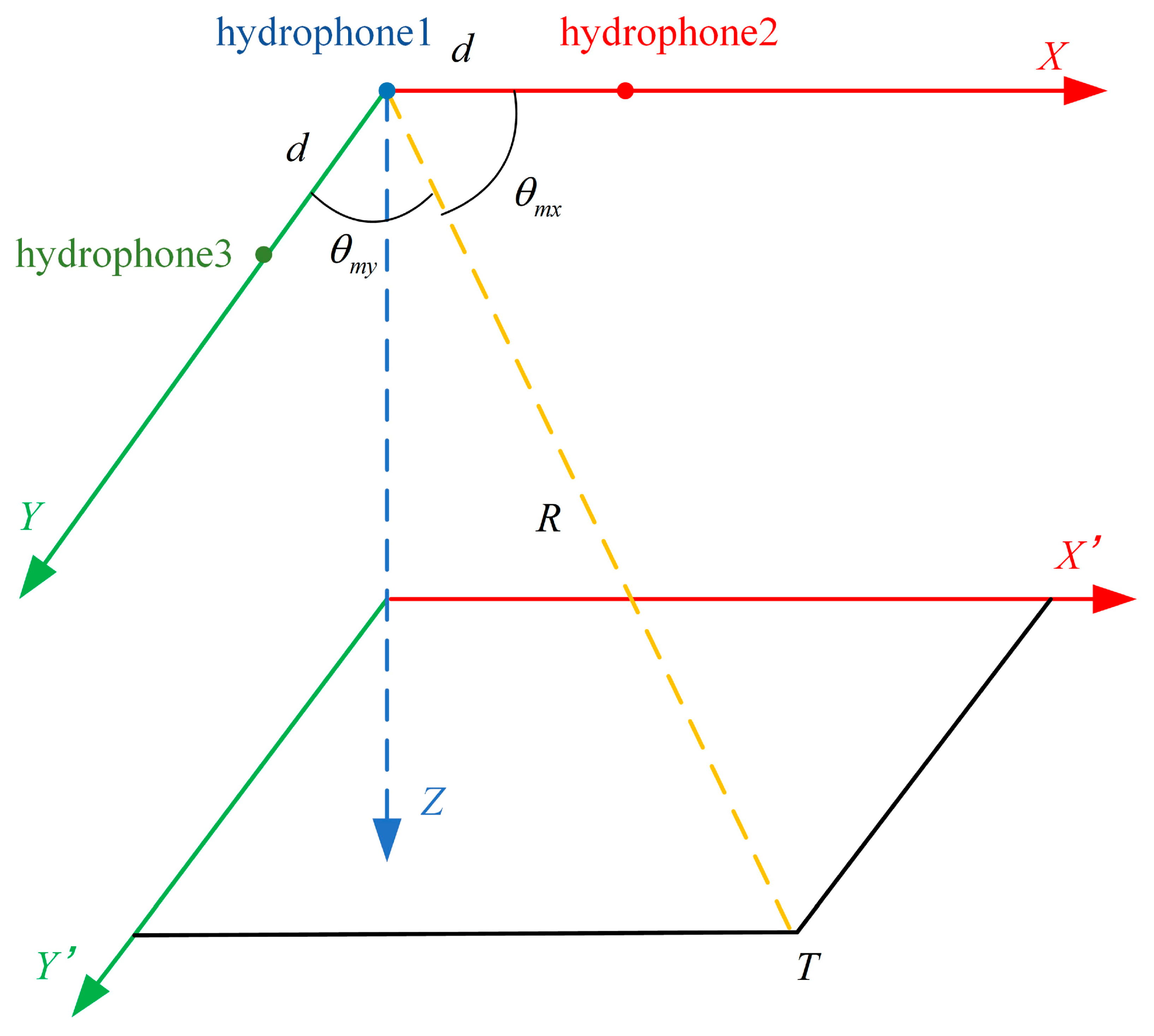


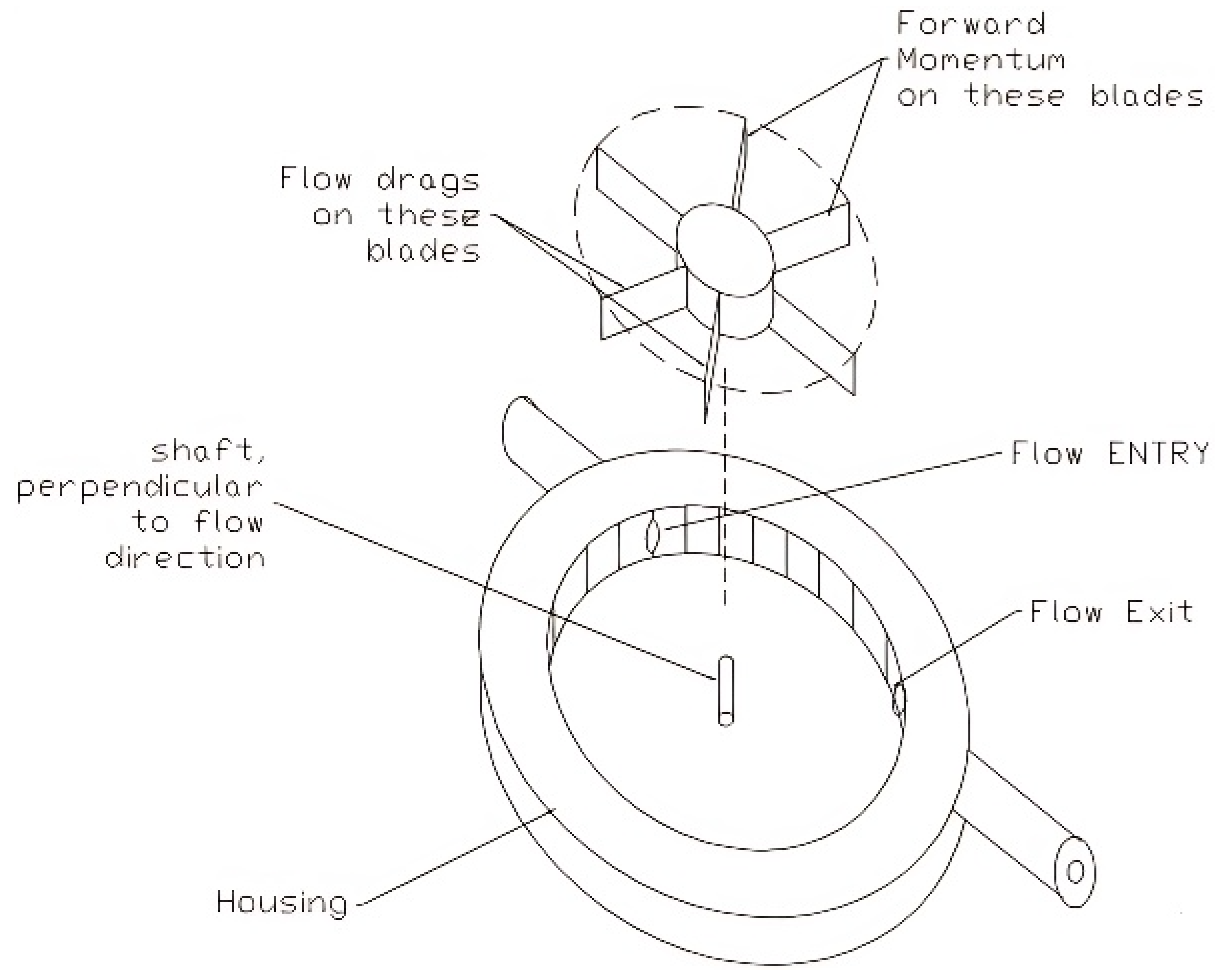
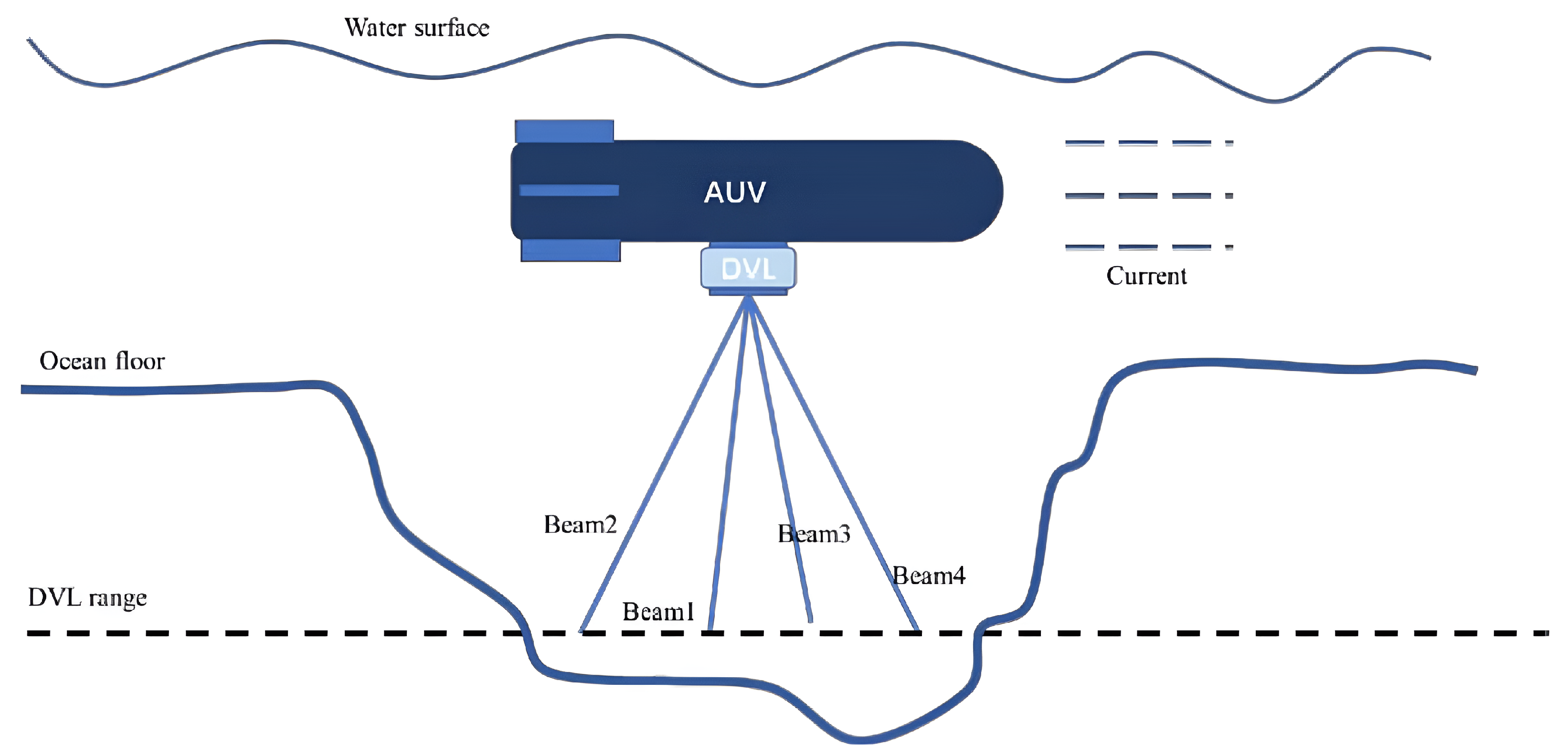
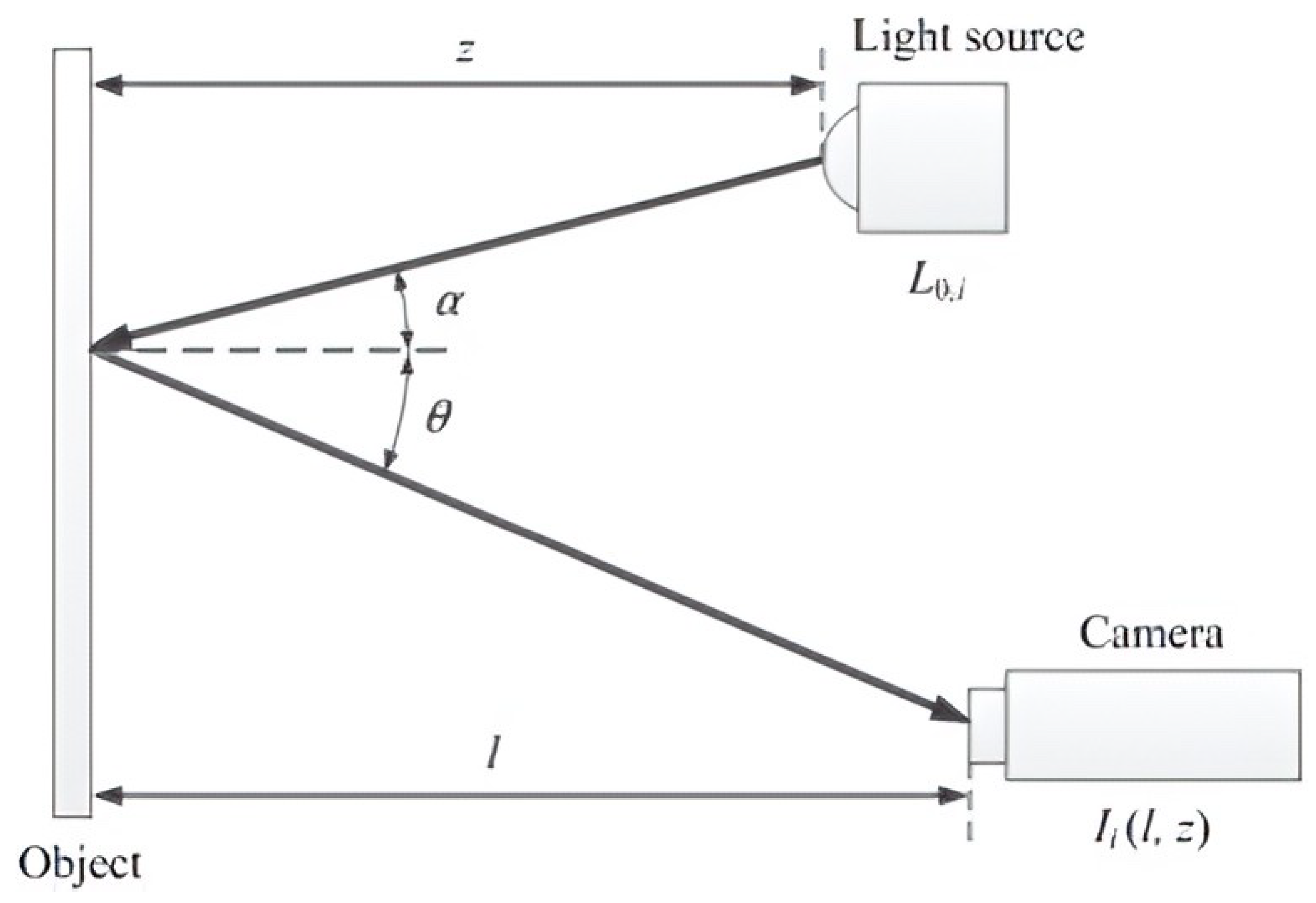
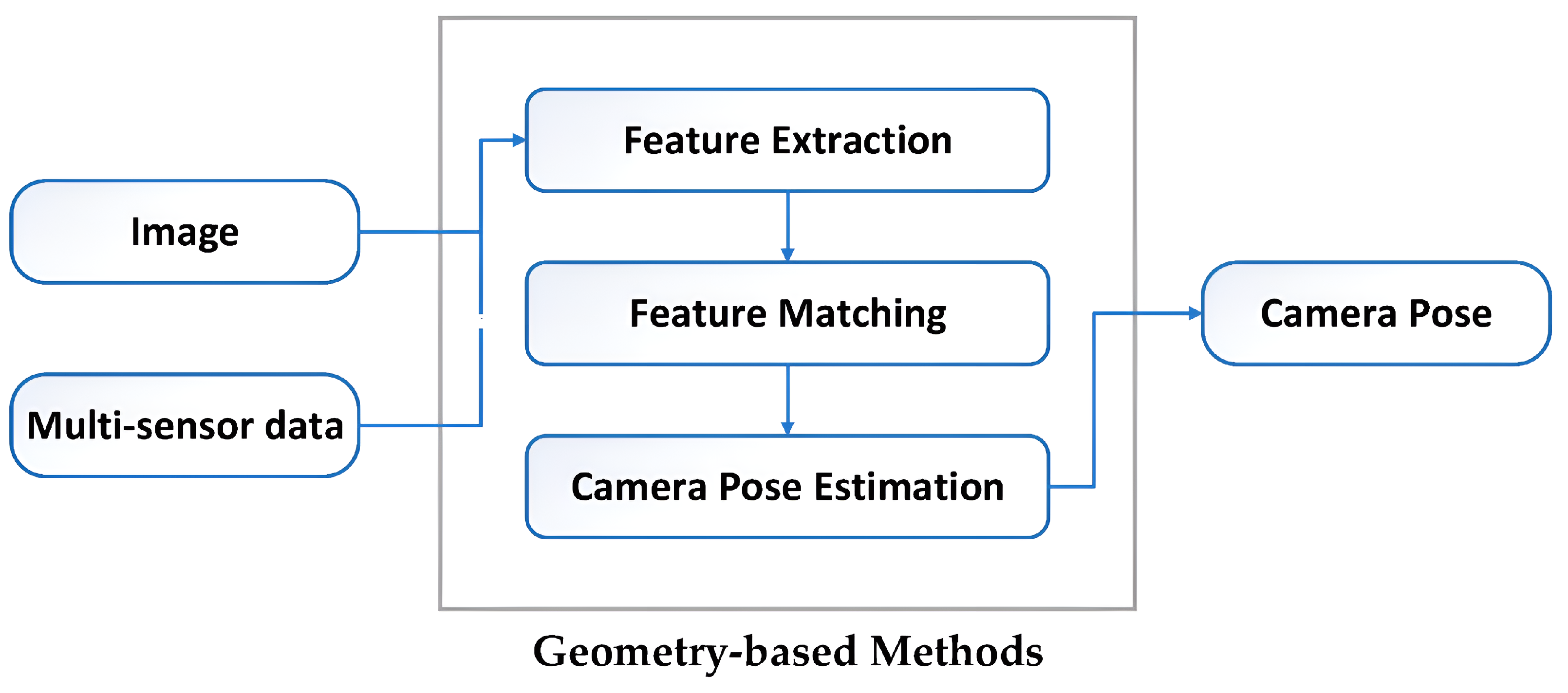
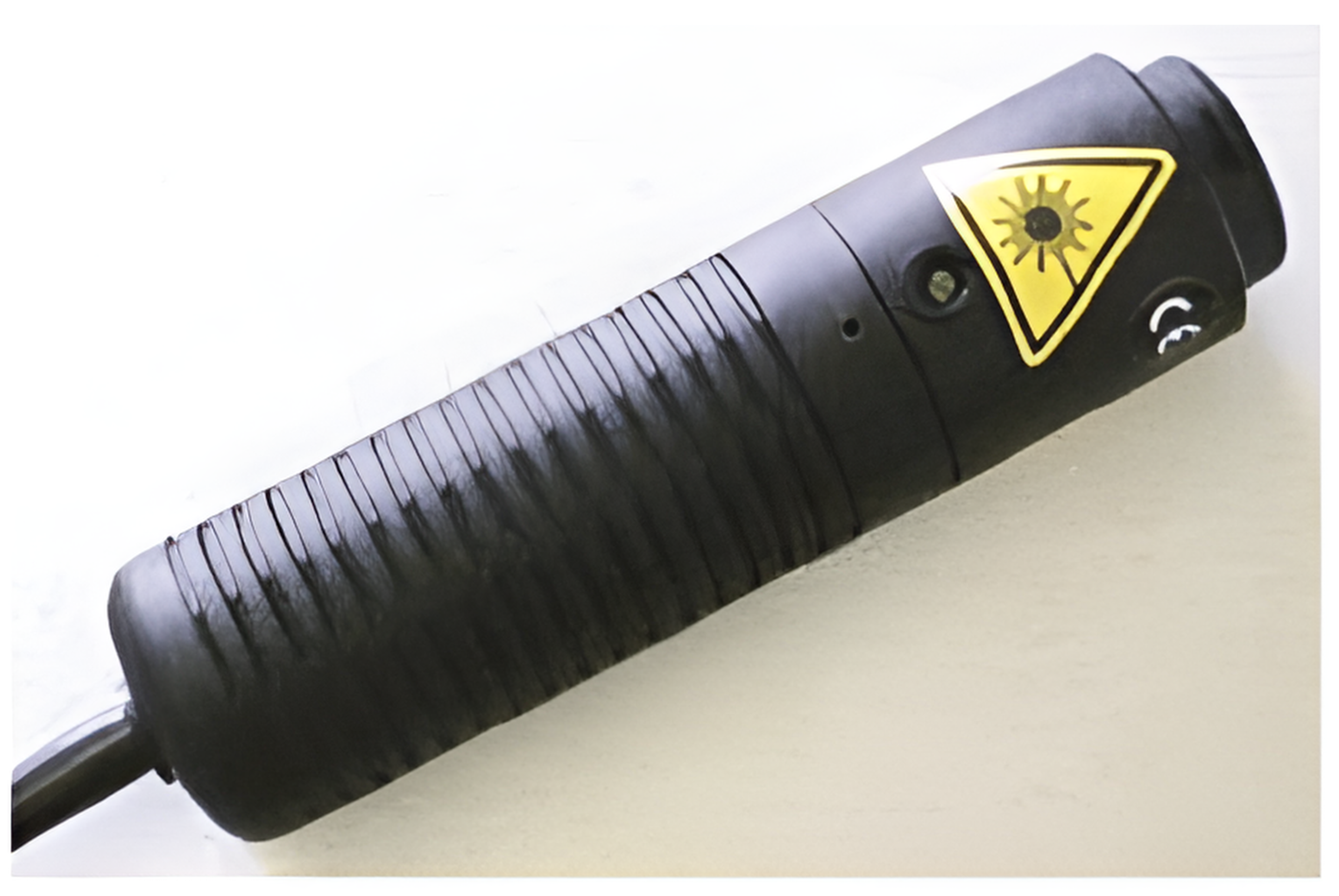
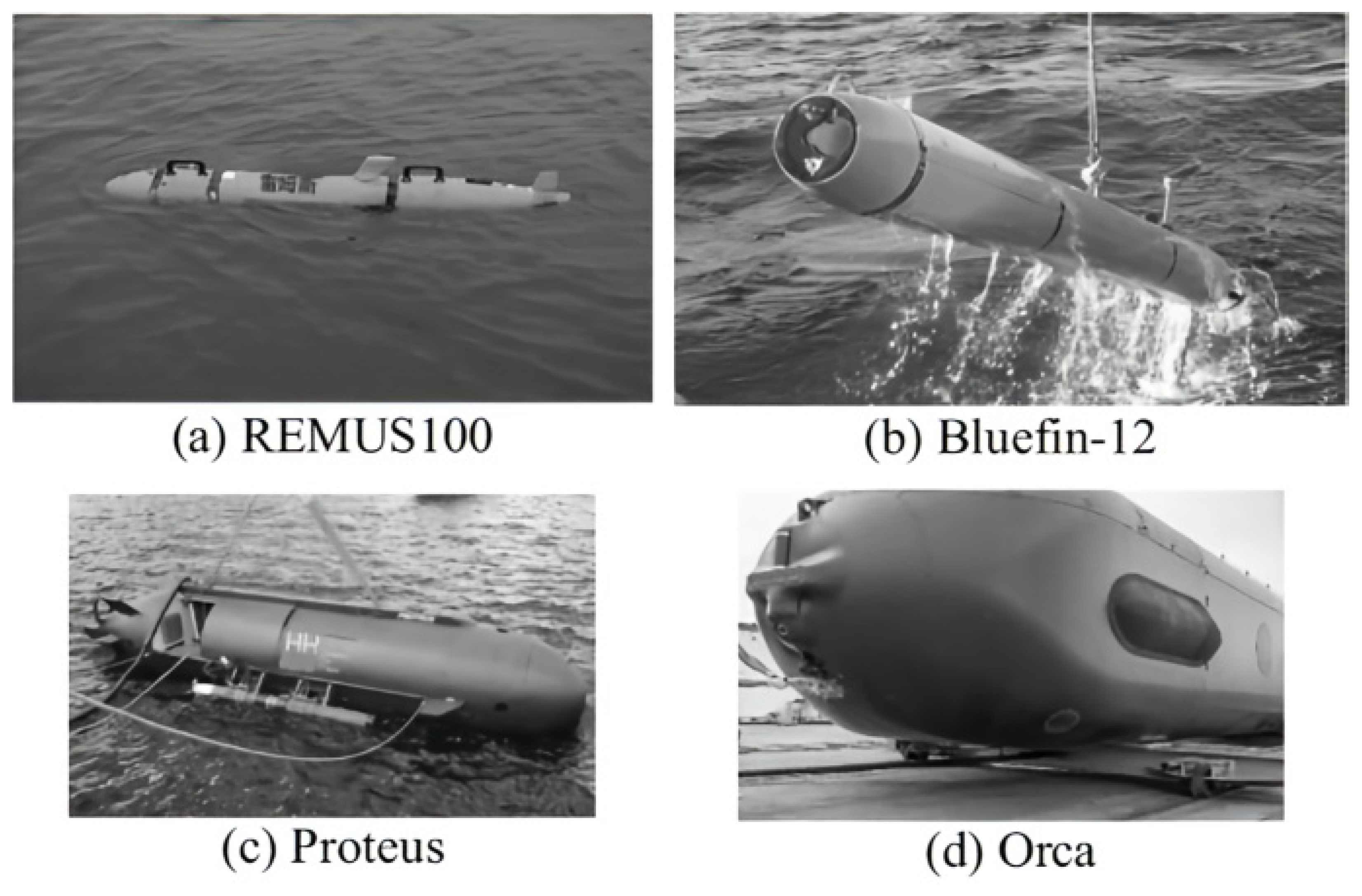
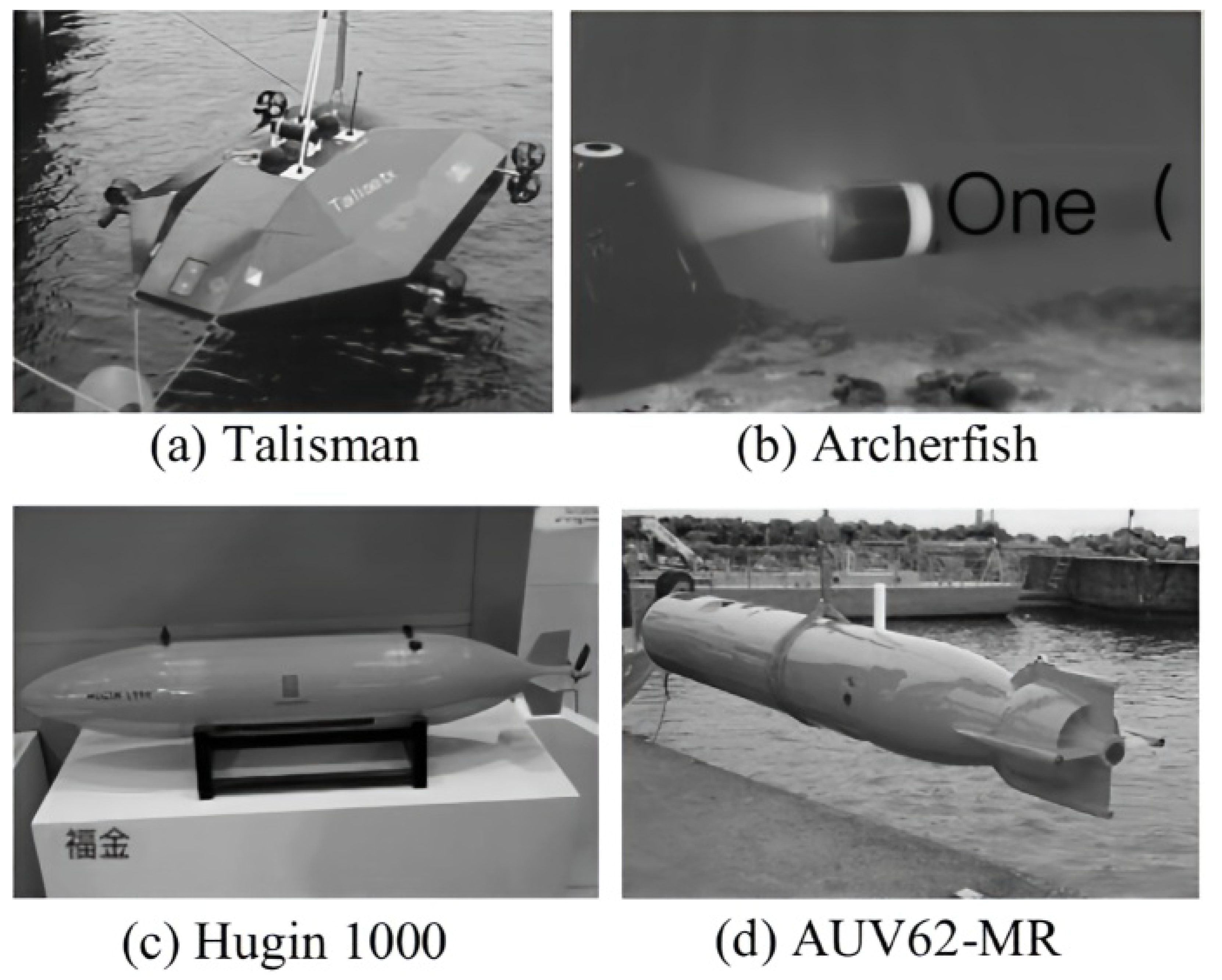


| Sensors/Systems Type | Capabilities | Challenges and Drawbacks |
|---|---|---|
| Inertial | Position, orientation, and velocity information are carried out by collecting data from accelerometers and gyroscopes | Data processing and fusion of data from multiple sensors are required to correct for drift errors |
| Acoustic | Acoustic transponders are used to determine positioning relative to receivers or features (seafloor) | Fixed infrastructure can be required, with constraints due to the water, environment, and possible speed restrictions |
| Depth | The ambient pressure in the water column is measured to calculate depth | Limitations are minimal, and measurement sensors will function at depths much greater than projected platforms are intended to go |
| Orientation | Platform heading is calculated from one or several sensors | Degraded performance during acceleration |
| Light and optical | Positioning is carried out using environmental features as a guide | Light attenuation in the water limits accuracy |
| Sonar: single beam, multibeam, sidescan, synthetic aperture | Target detection and identification, buried object detection, imaging | Sound propagation in water depends on the temperature and salinity; calibration is needed |
| Sensor Name | Data Sample Rate | Accuracy | Voltage | Current | Price |
|---|---|---|---|---|---|
| Ultrasonic | 1–10 Hz [176] | 0.3–50 knots [176] | 9–12 V [177] | 35–80 mA [177] | USD 986.29 [176] (approx.) |
| Sensor Name | Data Sample Rate | Accuracy | Voltage | Current | Price |
|---|---|---|---|---|---|
| Paddlewheel | 1 Hz [177] | 0–50 knots [177] | 7–16 V [187] | 20–50 mA [187] | USD 195.38 [187] (approx.) |
| Sensor Name | Data Sample Rate | Accuracy | Voltage | Current | Price |
|---|---|---|---|---|---|
| DVL | 2–15 Hz [194] | ±1.01%± 0.2 cm/s [194] | 10–30 V [194] | 40 mA [194] | USD 7890 [194] (approx.) |
| Sensor Name | Data Sample Rate | Accuracy | Voltage | Current | Price |
|---|---|---|---|---|---|
| Optical | 1 Hz [213] | 2 knots [213] | 9–12 V [213] | 85–120 mA [213] | USD 682 [215] (approx.) |
| Sensor Name | Data Sample Rate | Accuracy | Voltage | Current | Price |
|---|---|---|---|---|---|
| Electro-magnetic | 1–1000 Hz [217] | 0.1 m/s [218] | 20–500 μV/m/s [216] | 4–20 mA [219] | USD 3946 [220] (approx.) |
| Sensors Name | Frequency | Accuracy | Voltage | Current | Operational Range | Environmental Compatibility | Price |
|---|---|---|---|---|---|---|---|
| Ultrasonic | 1–10 Hz [176] | 0.3–50 knots [176] | 9–12 V [177] | 35–80 mA [177] | 2–5 m [221] | Very Good | USD 986.29 [176] (approx.) |
| Paddle-wheel | 1 Hz [177] | 0–50 knots [177] | 7–16 V [187] | 20–50 mA [187] | 0.1–6 m/s [222] | Good | USD 195.38 [187] (approx.) |
| DVL | 2–15 Hz [194] | ±1.01%± 0.2 cm/s [194] | 10–30 V [194] | 40 mA [194] | 5 cm–125 m [223] | Very Good | USD 7890 [194] (approx.) |
| Optical | 1 Hz [213] | 2 knots [213] | 9–12 V [213] | 85–120 mA [213] | ≤150 m [224] | Good | USD 682 [215] (approx.) |
| Electro-magnetic | 1–1000 Hz [217] | 0.1 m/s [218] | 20–500 μV/m/s [216] | 4–20 mA [219] | 0–50 m/s [216] | Very Good | USD 3946 [220] (approx.) |
| Requirement | Commercial Products | Military Contexts |
|---|---|---|
| Velocity Operation | Usually slower speeds, with longer operating times and energy economy in mind | In tactical tasks, higher speeds are necessary for quick deployment and mobility |
| Maximum Depth | Typically made at smaller depths, it is appropriate for jobs like surveys and underwater inspections | Ability to descend farther to facilitate a range of military missions, such as mine detection and deep-sea reconnaissance |
Disclaimer/Publisher’s Note: The statements, opinions and data contained in all publications are solely those of the individual author(s) and contributor(s) and not of MDPI and/or the editor(s). MDPI and/or the editor(s) disclaim responsibility for any injury to people or property resulting from any ideas, methods, instructions or products referred to in the content. |
© 2025 by the authors. Licensee MDPI, Basel, Switzerland. This article is an open access article distributed under the terms and conditions of the Creative Commons Attribution (CC BY) license (https://creativecommons.org/licenses/by/4.0/).
Share and Cite
Sagar, M.M.; Konara, M.; Picard, N.; Park, K. State-of-the-Art Navigation Systems and Sensors for Unmanned Underwater Vehicles (UUVs). Appl. Mech. 2025, 6, 10. https://doi.org/10.3390/applmech6010010
Sagar MM, Konara M, Picard N, Park K. State-of-the-Art Navigation Systems and Sensors for Unmanned Underwater Vehicles (UUVs). Applied Mechanics. 2025; 6(1):10. https://doi.org/10.3390/applmech6010010
Chicago/Turabian StyleSagar, Md Mainuddin, Menaka Konara, Nate Picard, and Kihan Park. 2025. "State-of-the-Art Navigation Systems and Sensors for Unmanned Underwater Vehicles (UUVs)" Applied Mechanics 6, no. 1: 10. https://doi.org/10.3390/applmech6010010
APA StyleSagar, M. M., Konara, M., Picard, N., & Park, K. (2025). State-of-the-Art Navigation Systems and Sensors for Unmanned Underwater Vehicles (UUVs). Applied Mechanics, 6(1), 10. https://doi.org/10.3390/applmech6010010







